|
|

|
The Cleveland and Eastern Interurban Historical Society and Museum
P.O. Box 34 - Chardon, Ohio 44024
ceihsmu@gmail.com
|

|
|
News and Events
* * * * *
Business Meeting Scheduled For May 1st
The May Business Meeting will be held on Thursday, May 1st, between 7 and 8 pm in the Old Town Hall at
the Chesterland Historical Village. Please join us, as we plan for this summer's events!
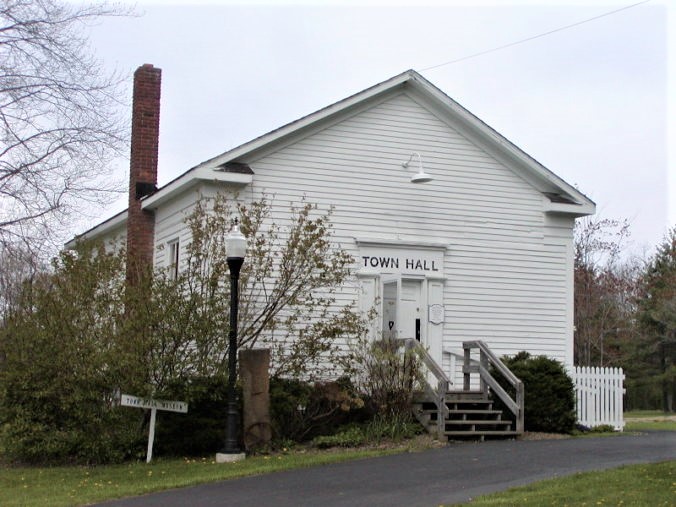
* * * * *
Museum Will Be Open On Sunday, May 4th
You can visit the C & E Museum on Sunday, May 4th, between 1:00 and 4:00 pm.
At the Museum, you can watch DVDs about the C&E; enjoy rare photographs; and view many books, models, maps, and
artifacts of the railroad. You can also tour the original Chesterland station; see an original freight cart restored by Society
members; and view an operating model layout of the road.
Knowledgeable volunteers will available to answer your questions and explain the history of the railroad.
The Museum is free but there are also opportunities to donate and/or become a member of the Society. Other buildings at the Historical
Village will also be open.
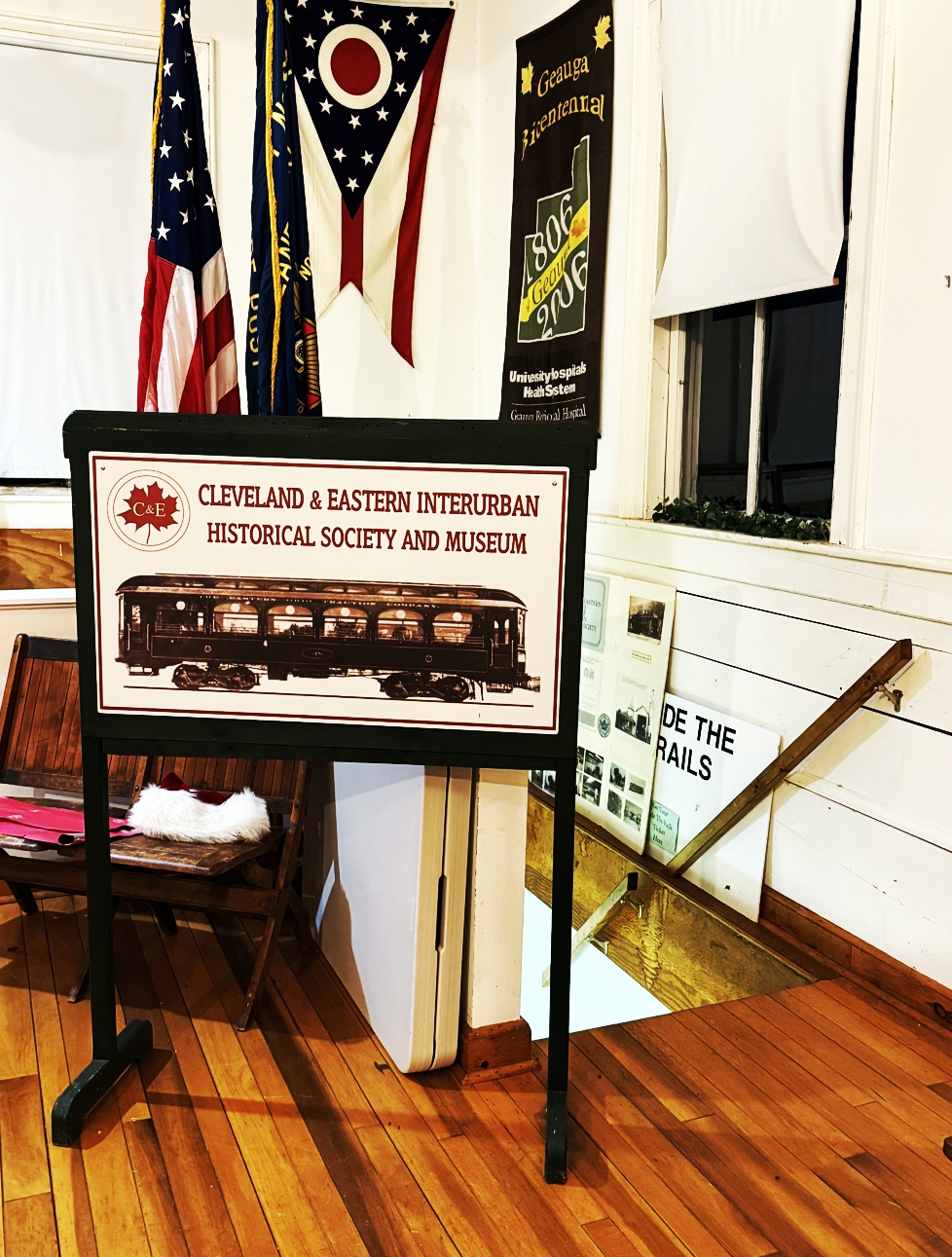
* * * * *
Dan Rager Continues His Presentations for 2025
Dan Rager, author of many books on the C&E, Interurban History in Ohio, and the Lake Division of the B & O, has been busy
giving presentations this year. This August, he has two events:
August 7, 6 pm - Dan will give a presentation at the Burton Library about his Vol. 6., Cleveland & Chagrin Falls vs. Cleveland
& Eastern. In addition to connecting Chagrin to Cleveland, the C.C.& F. was eventualy extended to Middlefield, Hiram, and
Garrettesville.
Register at Burton Library to reserve a seat.
The library is at 14588 West Park Street in Burton.
August 23, 10 am to 3 pm - Dan will have a book signing for the NE Ohio Historical Day sponsored by the Painesville Railroad
Museum. Many railroad topics will be discussed including Dan's Vols. 4 & 7 about the Baltimore & Ohio Railroad & its predecessor, the
Pittsburg & Western. The P & W used the Painesville Depot as it's first depot in Paineville. The C & E connected with the B&O in Chardon and
Middlefield. Contact: Painesville Railroad Museum for more details.
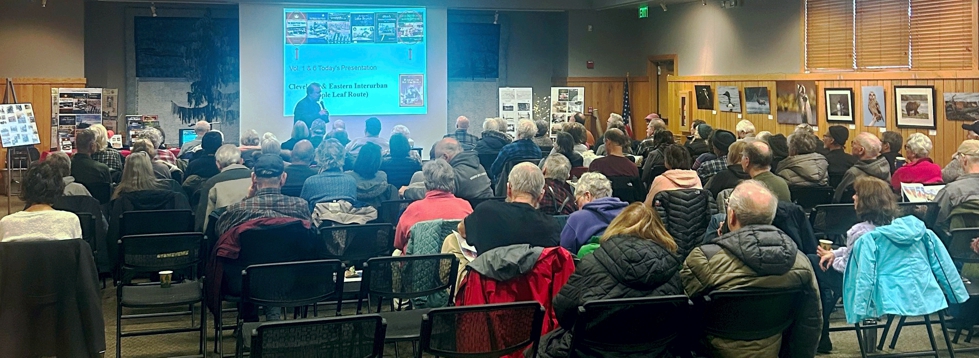
* * * * *
Members Brighten and Protect Scotland Station!
On September 29th and October 12th, Society members Judy Barnhart, John Ivancic, Jim Rivers, Adam Dietrich and Scott Stasa
repainted much of the iconic Scotland station at the Chesterland Historical Village. The crew scraped the siding, applied
red paint to the walls, and, then, carefully painted the white trim. It appears, however, that it will take a couple more days to complete the
time-consuming trim. Members also plan to restore a milk stand with milk cans which once stood at the site.
We will keep you updated on future work sessions to complete the project which may run into Spring
The Scotland station was built shortly after the C & E was completed in 1899. It stood on the south side of Mayfield Road next to T.J. Thayer General
Store (which was just west of where Bloom Brothers is, today). The station (Stop 24A) was at on the northside of the tracks, facing southwest. After the
interurban closed in 1925, Bill Wilson, who worked for the C & E, bought the depot and moved it across the street to use it as a residential garage. In 1987,
the station was moved to it's present location at the Historical Village where Stop 24 for Caves Road once stood. The depot was restored to its
original condition by community volunteers. The T.J. Thayer Gerneal Store was later also moved to the Village.
Scotland derived it's name from Porter Scott who owned land on the south side of Mayfield on both sides of Caves Road in the late 1800's. When the interurban
was built it crossed his land so the area was called Scotland. He gave the land for the depot. Earlier the area was called Scott's Crossing. The name was
also applied to Scotland School which stands in the Historical Village.
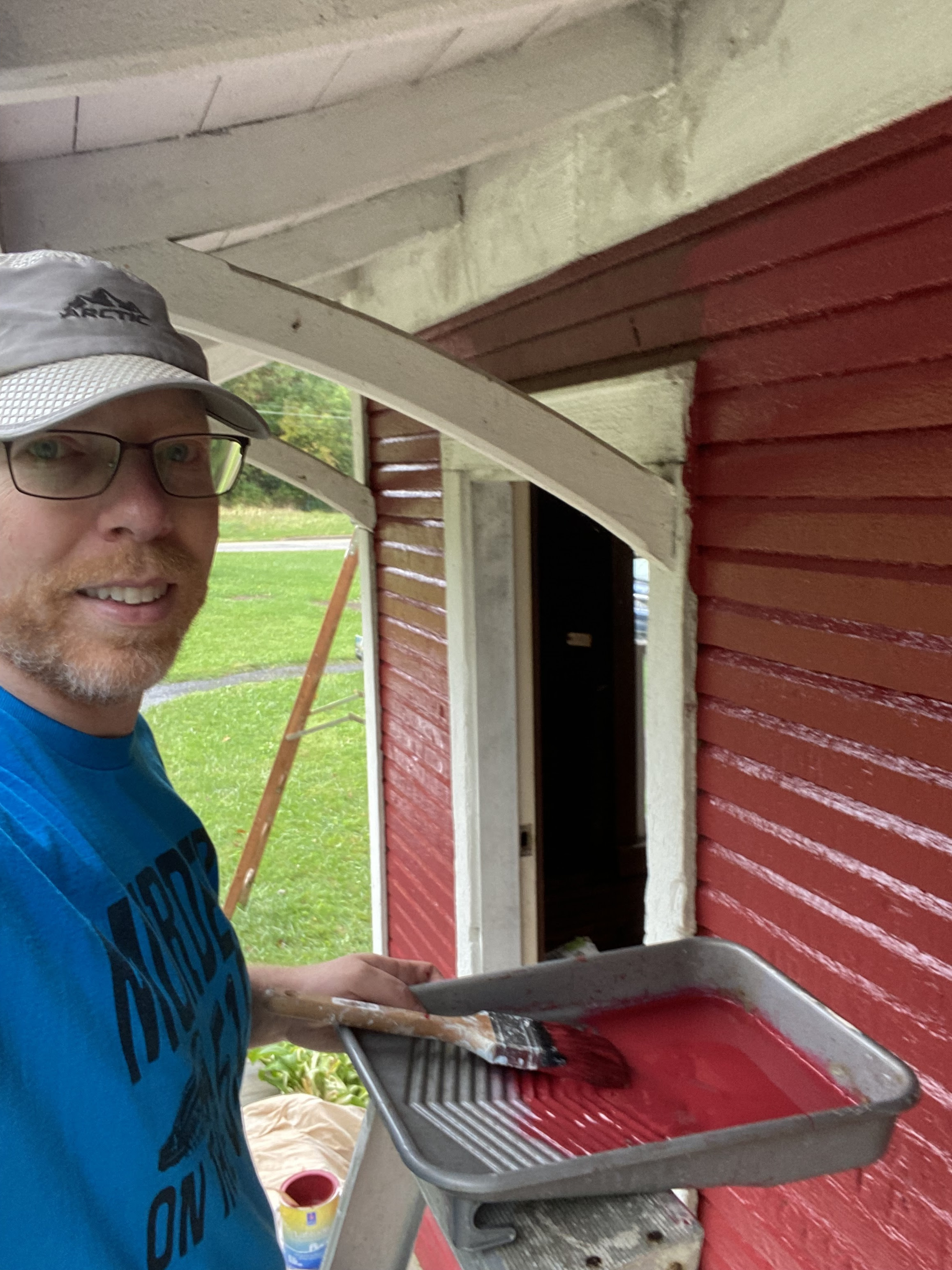
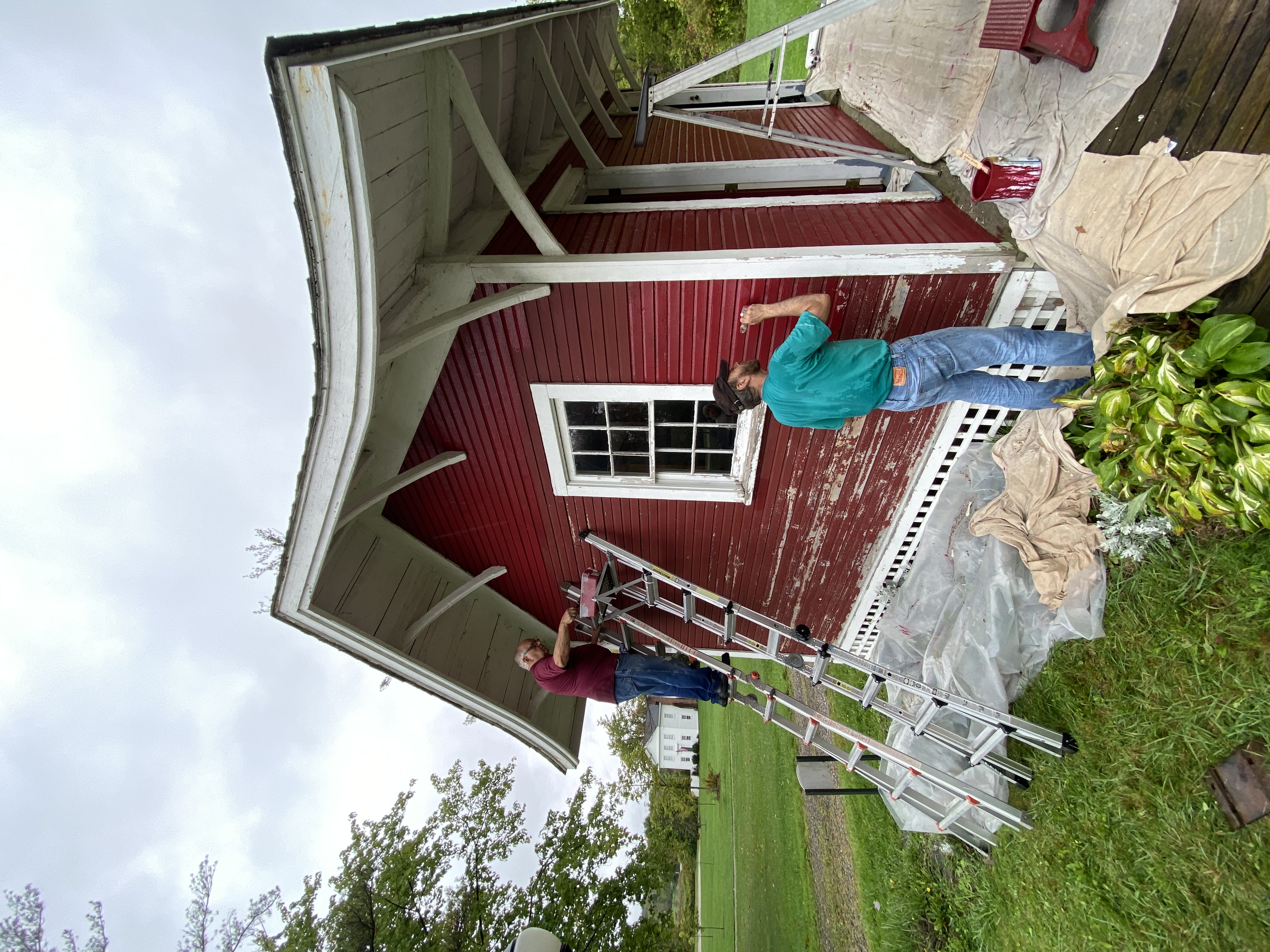
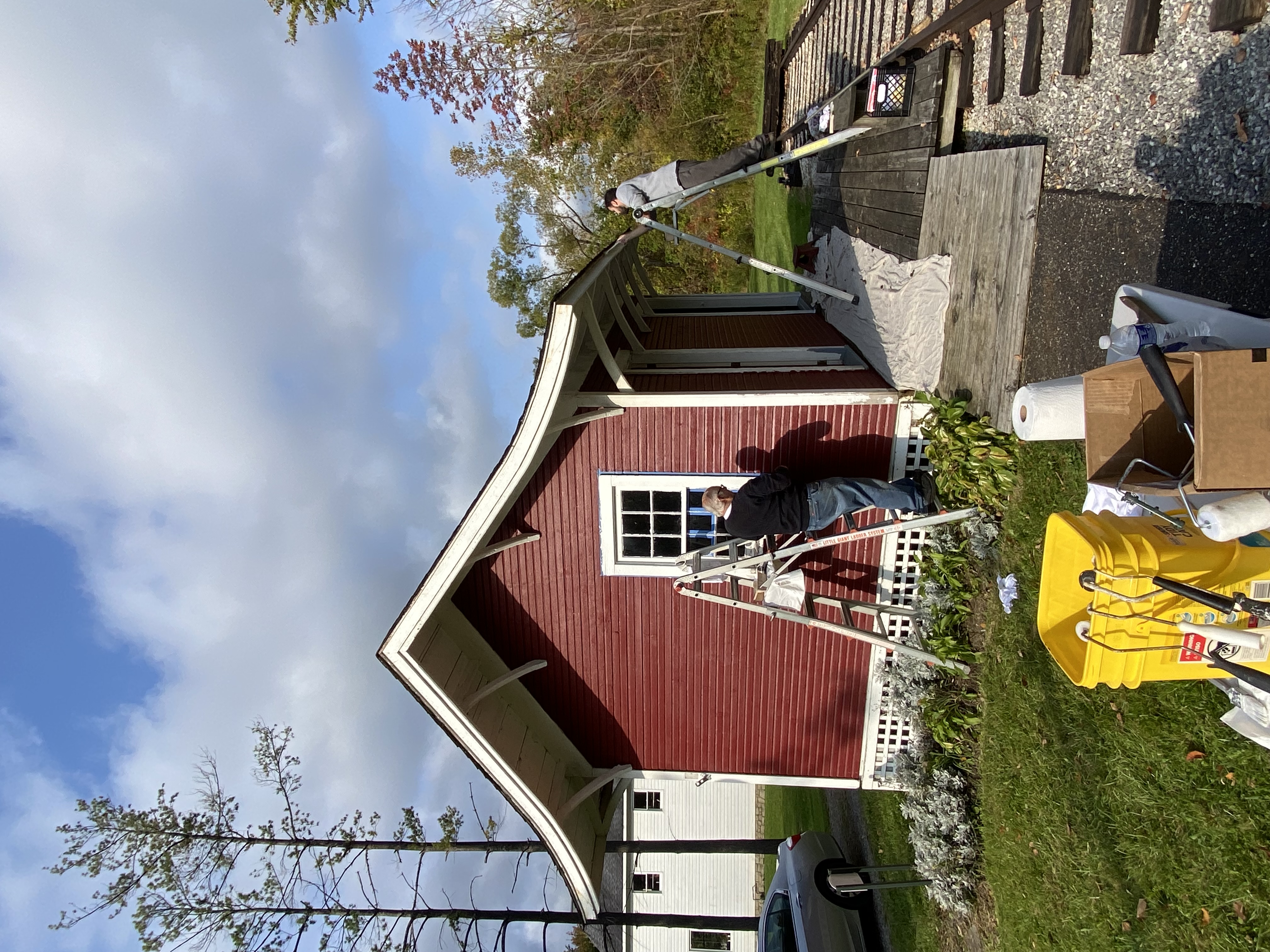
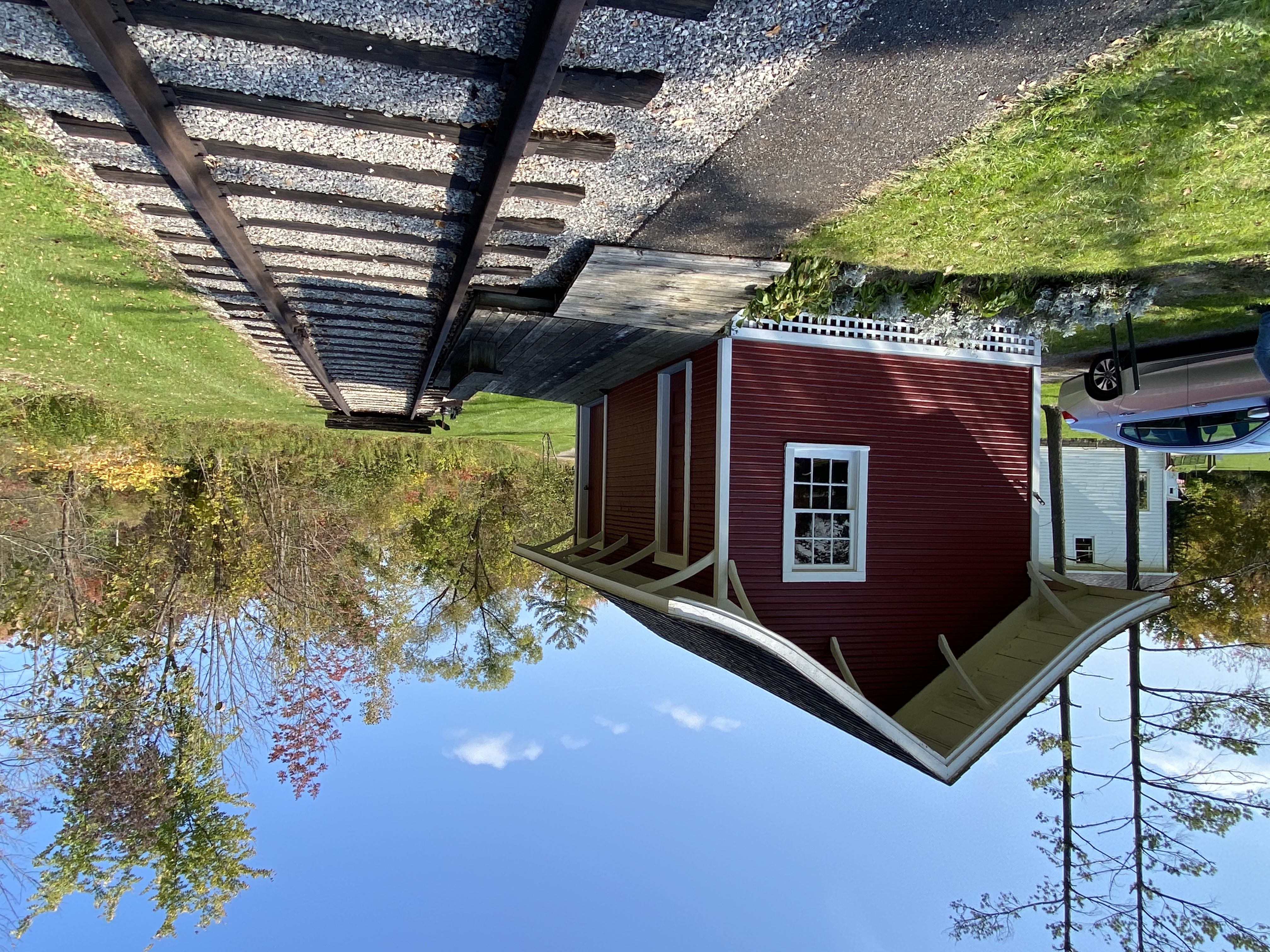
* * * * *
Members Walked Along Old Right-Of-Way At Bass Lake
C & E members had the rare opportunity on Saturday, October 12th, to explore the former C & E right-of-way at the Bass Lake Nature Reserve in Munson.
This was the location of C & E Stop #39 where passengers once disembarked for a boat ride across the lake to a popular summer resort. There is good path
along much of the former right-of-way but it is normally closed to the general public to protect the area's habitat of the endangered Ohio brook trout which is the
is one of the Nature Reserve's primary missions.
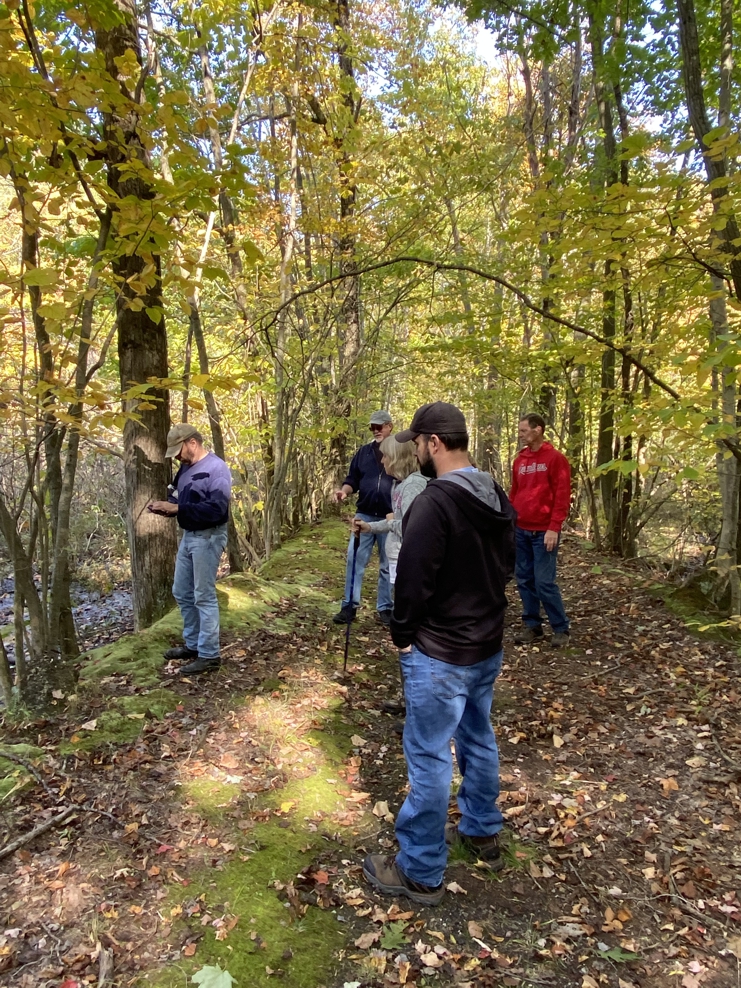
* * * * *
Chardon & Rotary Club Recognizes Railroad's History
The only structure that remains from the B & O Railroad that once ran thru Chardon, is a small brick building which sits along the
Maple Highlands Trail, north of Park Avenue. The building, called the Brine House,
was used to filter water for the B & O and C & E steam engines which stopped in Chardon's large
14-track rail yard. A 50,000 gallon, double-spouted water tank once stood just north of the Brine House to
water two engines simultaneously.
The City of Chardon recently decided to save the Brine House to recognize the important role that
the railroad and interurban played in it's history.
The City and the Chardon Rotary Club provided funds to create three murals on the the building and to install several
display signs telling the history of the Chardon yard, the C & E, the B & O, and it's narrow-gauge predecessor, the Painesville &
Youngstown (P & Y).
The display signs have already been installed. In addition to interesting historical narrative, they include rare photographs from the collections
of our own society members, Bill Jackson and Dan Rager.
The the three murals are currently being created by artist Elliot
Miller, a graduate of Chardon High School.
The Brine House can be easily accessed from the Maple Highland Trail north, off of Park Avenue, in Chardon. There is a nearby parking lot and restrooms
managed by the Geauga Park District.
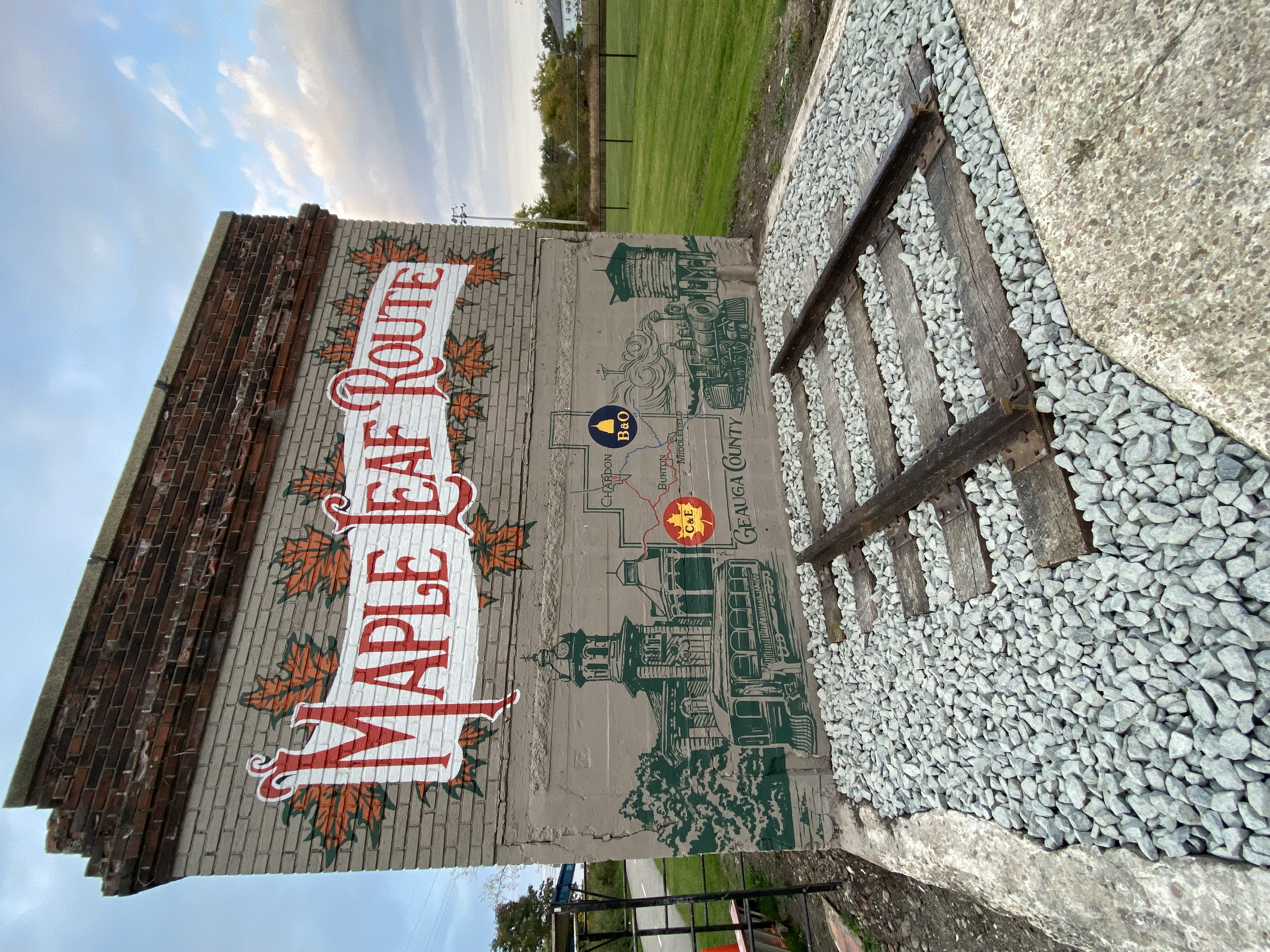
South Side of Brine House
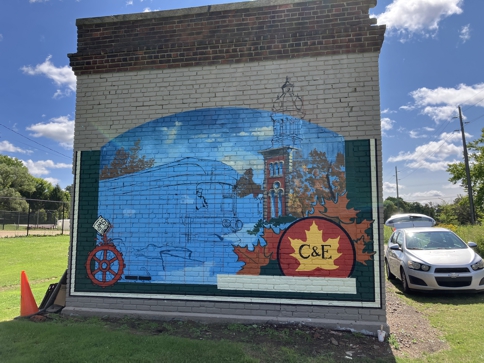
North Side
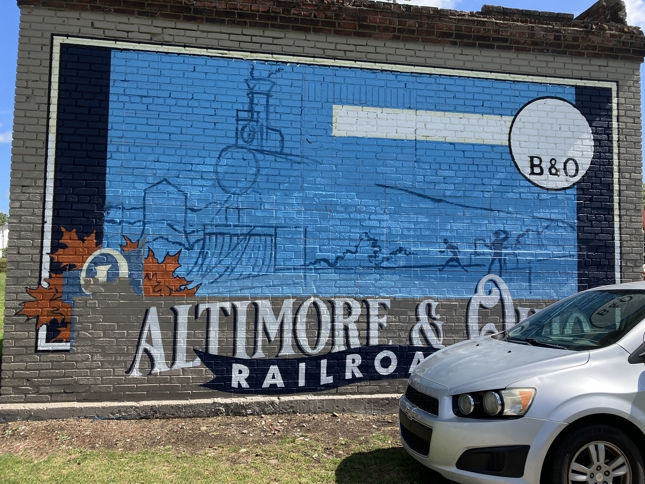
West Side
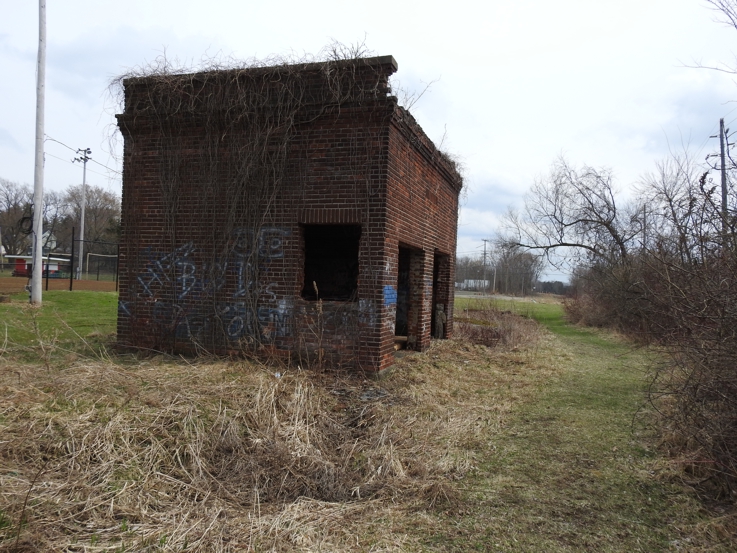
North Side before the construction of the Bike Trail.
The track was to the right of the building, where the Trail is today.
* * * * *
Members Install New Switch Stand at Scotland Station
Members Adam Dietrich, Jim Rivers, and Scott Stasa recently enhanced the Scotland Station at the Chesterland Historic Village
by installing a manual switch stand along the station track.
Similar low-style stands
operated the turnouts at the sidings and could be locked in either position to
prevent unauthorized operation of the switch. The target, attached to
vertical mast, showed whether
the switch was open or closed. This stand, the planned installation of
of overhead trolley wire, and the addition of authentic milk cans to the milk platform will help our visitors visualize how the station may have looked in the early 1900s.
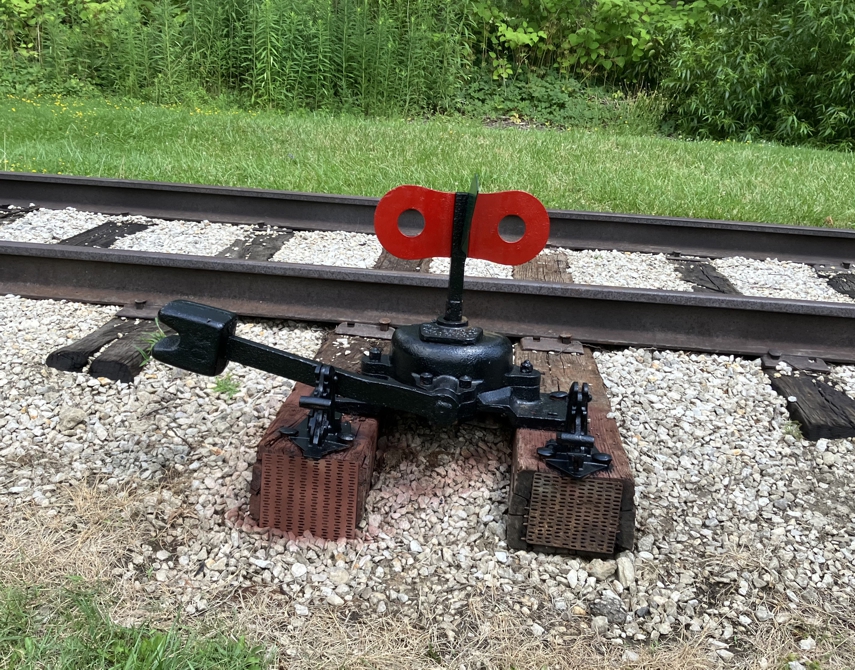
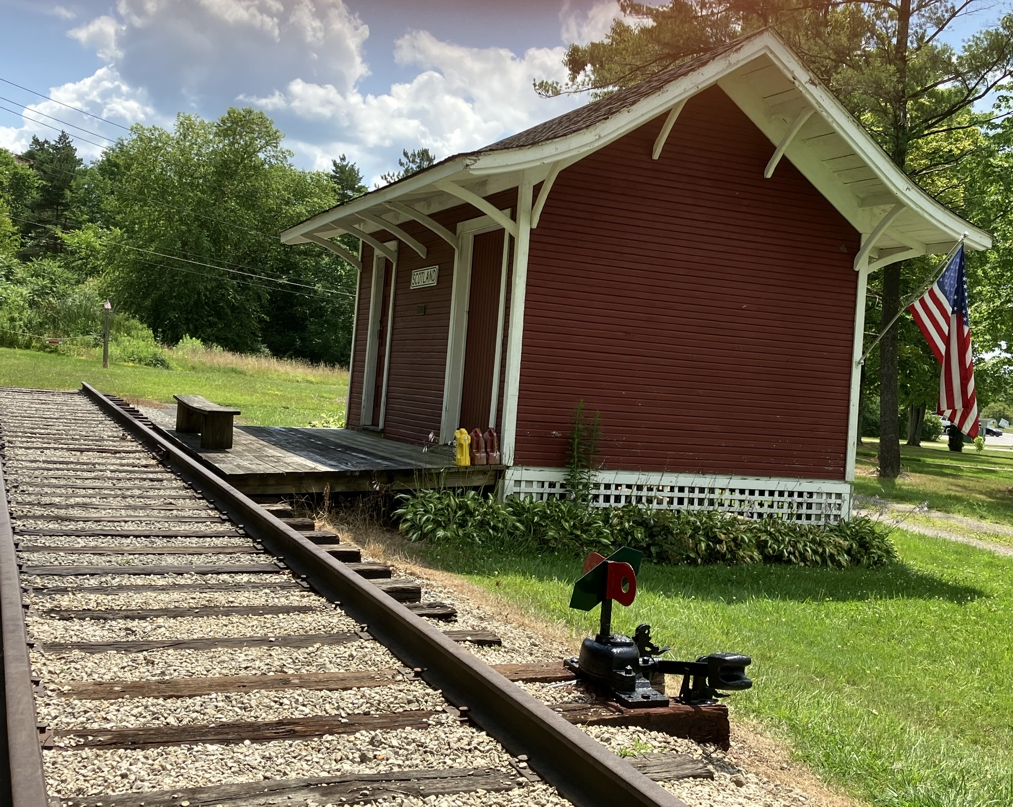
Dan Rager Publishes New Book On Lake Division of B & O
Dan Rager, author of books about the C.& E., the Cleveland & Chagrin Falls Interurban (C.& C.F.), and the History of Ohio Interurbans,
has published his second book on the Lake Division of the B & O. The Portrait of The B&O Lake Branch, Part 2, Vol 7, Photo Edition
adds greatly to the information in his earlier Building the Lake
Branch.
This new book, assembled from eleven different collections, creates the largest collection of professional photographs of the Lake Branch. It lists all the sidings, stations,
and other miscellaneous information about the B &O from Painesville to the Forest Jct. It provides excellent details regarding the rail
connections with the C.& E. and C.& C.F. in Middlefield and the C. & E. connections in Chardon.
There are many photos and information about trains which traversed the line including the EM-1 locomotives which were the largest steam
engine that was ever operated by the B & O. They ran on the Lake Division from 1952 to 1956. The author also quotes descriptions of
railroad cars and life along the line from as early as 1874 when the road was originally constructed as a narrow gauge railroad.
There are also interesting chapters about businesses along the line, derailments, and a "ghost" crossing by the Clinton
Air Line R.R.
The book is 120 page, 8-1/2 x 11" paperback book available at many sellers, including the Maple Leaf Publishing Company, P.O. Box 144, Chardon, OH 44024, Email: mapleleafroute@gmail.com or Mountain Road Bikes, Chardon, Ohio,
Email: russ@mtnroadcycles.com
Price: $59.95 plus shipping (if applicable)
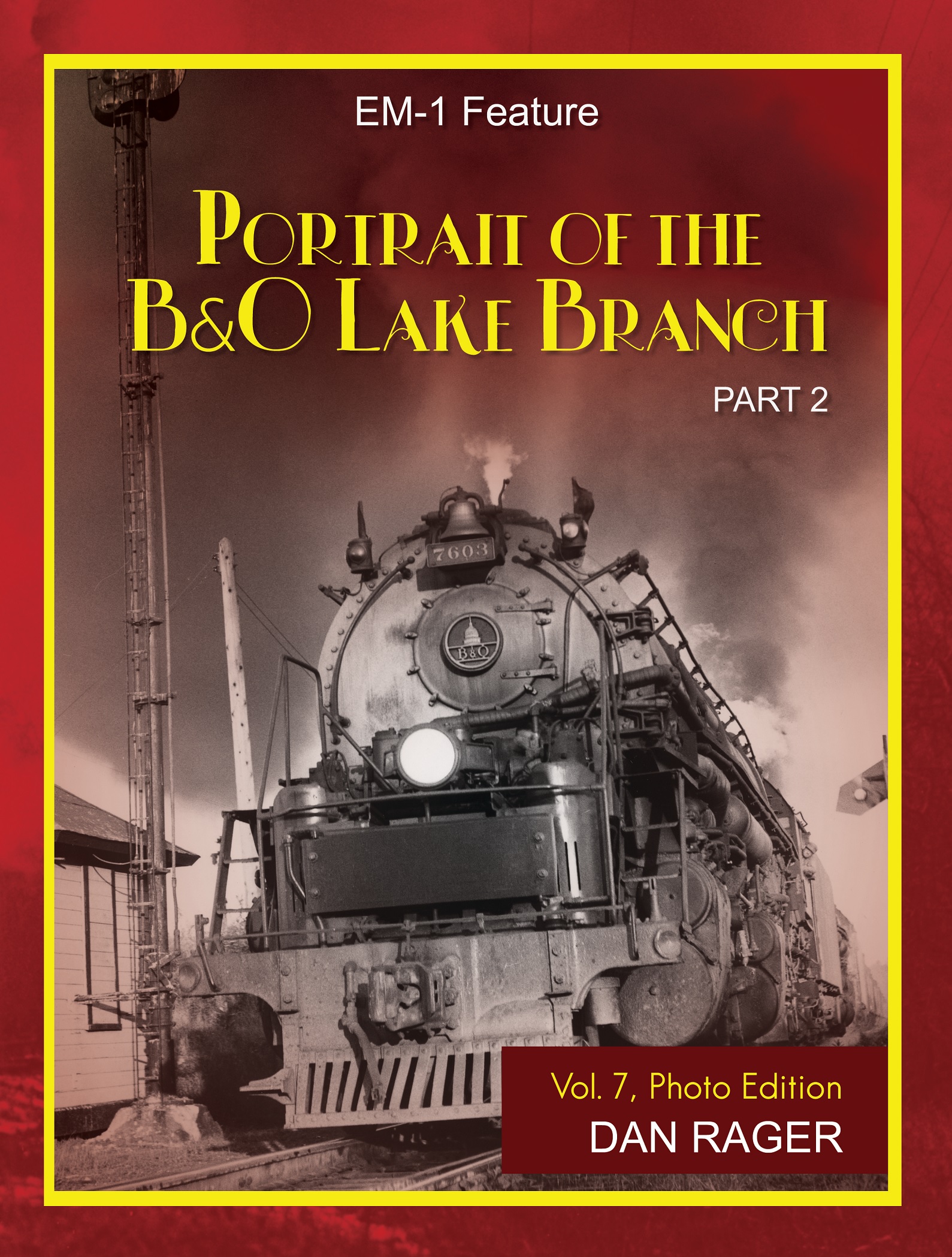
* * * * *
New Video Published on the C & E
Railroad Street has recently published a YouTube video about the history of the Cleveland & Eastern Railroad.
It is titled Geauga County's Abandoned Interurban Railroad
and is over 34 minutes long with many excellent historic photos along with
interesting commentary by Thomas S. Treer, Lyndhurst Historian; Walt Stoner,
President of Northern Ohio Railroad; and Dan Rager, historian and publisher of a number of recent
books about the C.& E. and The Lake Division of the B & O. Click https://youtu.be/RUAgCGVNwm4
for enjoyable viewing!
* * * * *
Gray Family Trust Donates Book Collection to C & E Museum
187 railroad and trolley-related books have been donated to our Museum from the Gray Family Trust in honor of Ralph Gray, who recently passed away in November. Ralph Gray was 98 years old and had a lifelong passion for railroads. He volunteered over 5,000 hours on the Cuyahoga Valley Scenic Railroad. He also volunteered in many capacities at Breckenridge Village where he and his wife Betty resided. He spent his Tuesday afternoons at the Village, with his friend Dick, working on the BV model railroad layout and sharing it with visitors
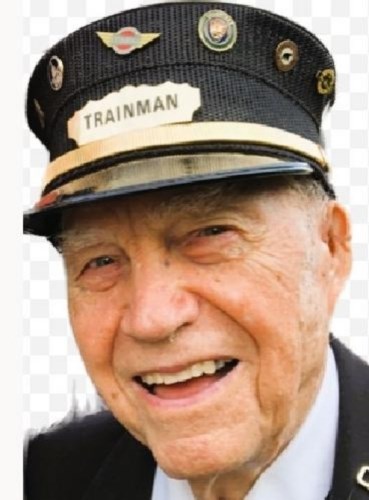
Ralph Gray
* * * * *
Car Stop #28 on the Cleveland & Chagrin Falls Interurban
Today, when you drive east from I-271 along Chagrin Boulevard, you will come to a large, busy traffic circle in Pepper Pike,
Ohio, named Landerwood Circle. Northeast of this circle is the Landerwood Shopping Center with with a number of stores,
including the Heinens Food Market. Just off the circle, to the south on Lander Road, is Garfield Memorial Church.
To the northeast is a large BP gas station. The surrounding area is clearly a prosperous, busy, commercial and residential
community.
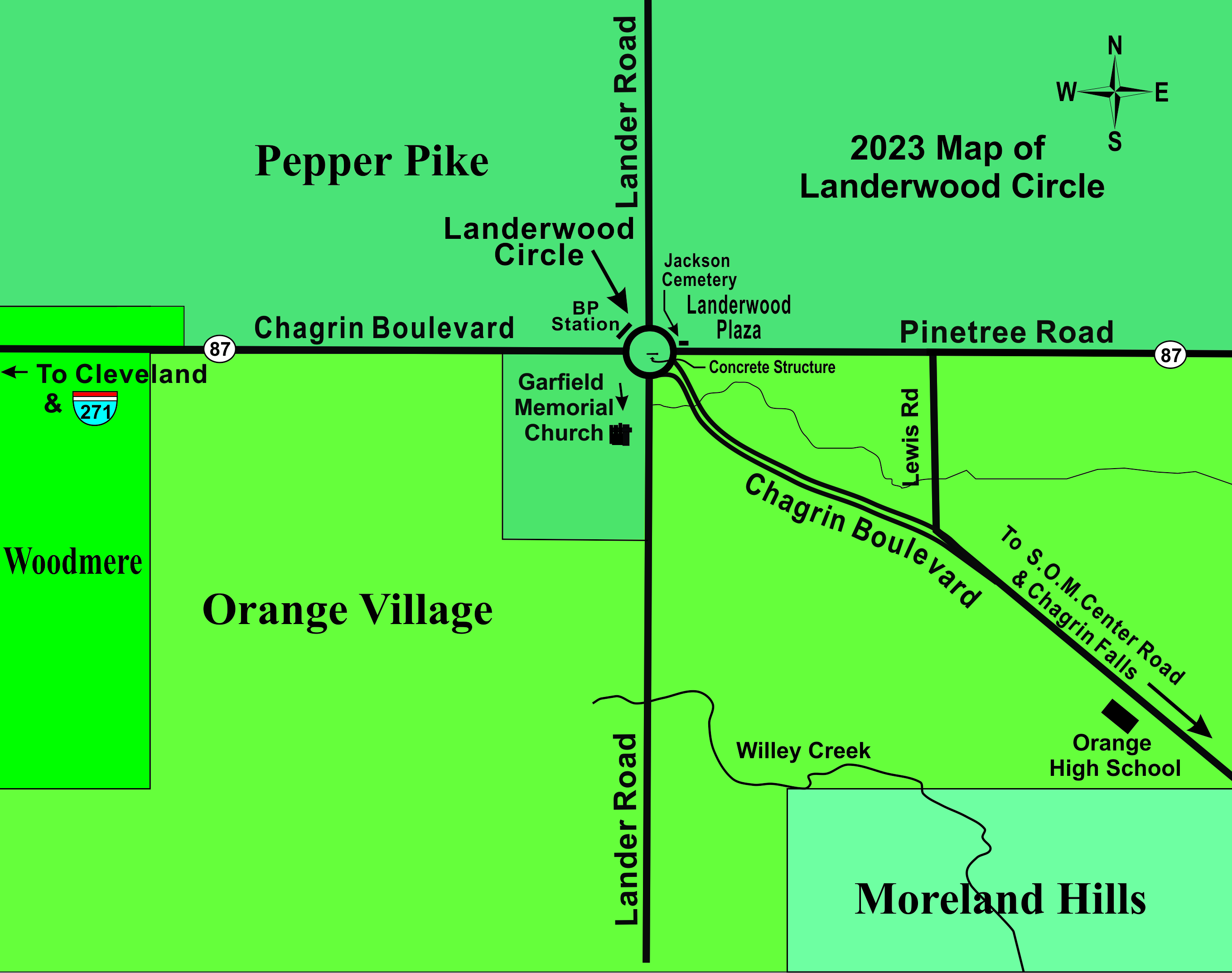
In 1899 the view was quite different. Where the circle is, today, was the junction of three dirt roads: Kinsman Road running
east and west; Lander Road running north; and Harper Road, slightly to the west, and running south. There was a small cluster
of houses, buildings and barns surrounded by farm land. At the northwest corner of Lander Road stood Orange Methodist Church
with a small family cemetery across the road and to the east. Along the south side of Kinsman Road ran the tracks and overhead
wires of the Cleveland and Chagrin Falls Electric Railway Company (C.&C.F.), and its car stop #28 for Orange Township.
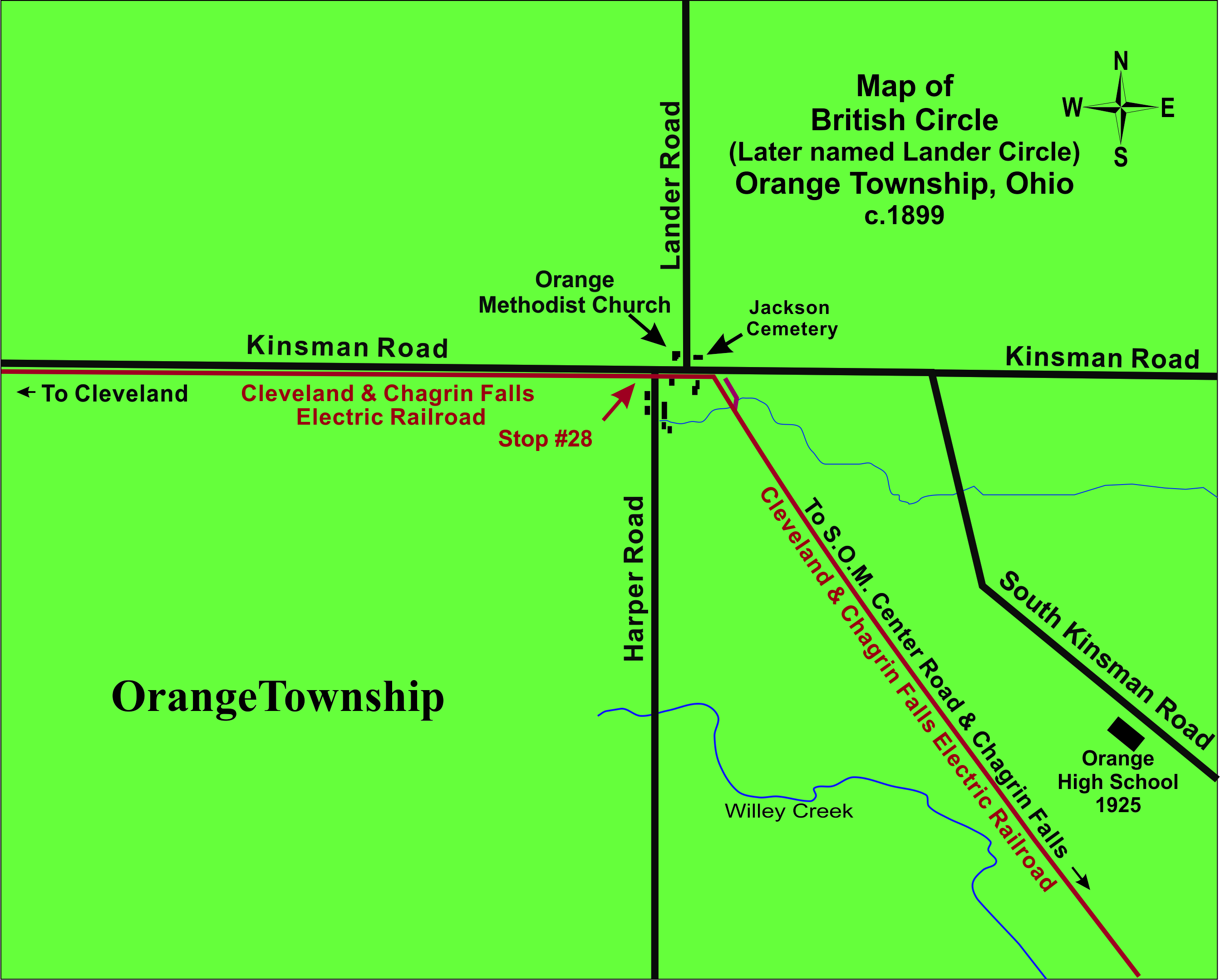
An interurban passenger car, arriving at stop # 28 would have started its trip at Public Square in downtown Cleveland,
running east on the city streetcar line. At the end of the city system it would have run along the south side of Kinsman Road,
reaching Orange after an 11 mile, 58 minute trip.
A few hundred feet beyond stop #28 the car would have turned southeast off Kinsman onto its own right-of-way and proceeded
in a short distance to behind where Orange High School stands, today. The car then followed along Willey Creek
and crossed S.O.M. Center Road in a deep ravine. The car would eventually descend into the Chagrin Valley, entering in
Chagrin Falls from the south, 23 minutes later.
Below is a painting by Glen Shaw, showing an interurban car heading east on Kinsman Road (later State Route 87) at stop
#28 in 1899.
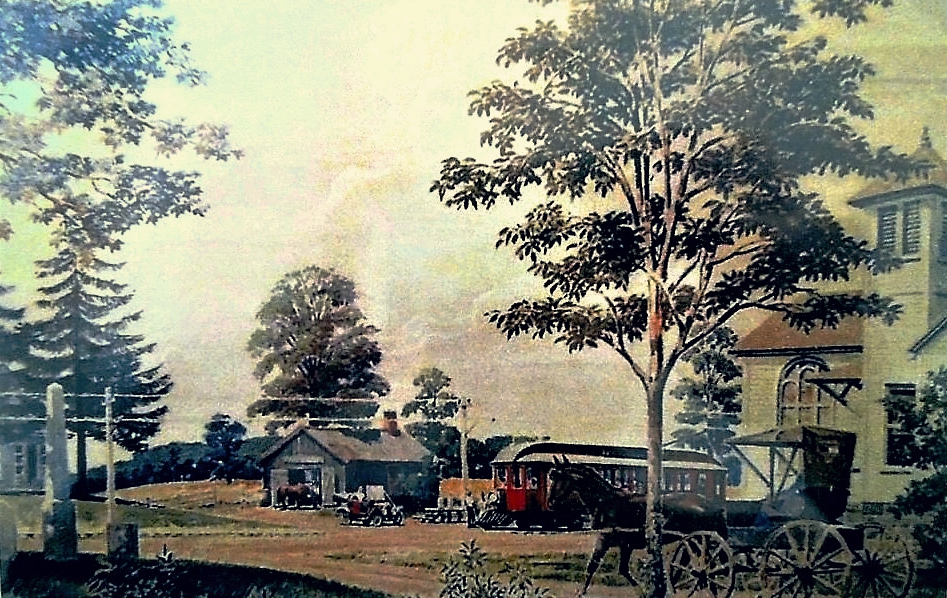
The horse and buggy was on Lander Road. The road ahead to the south and slightly to the west was Harper Road.
The church was Orange Methodist Church. Note the cemetery markers, an early automobile, and some milk cans
awaiting pickup.
The C&CF ceased operation in 1925, and the Cleveland developers, the Van Sweringen brothers, bought the land owned by
the church to create the current day traffic circle.
The church was rebuilt south of the circle along the west side of Lander Road and renamed Garfield Memorial Church
in honor of President James A. Garfield who had been born in Orange Township in 1831. The cemetery markers shown in Glen
Shaw's painting can still be seen in front of the current day Landerwood Plaza.
Lander Road, north of the circle, was moved slightly to the west from its original location and a new divided
highway was built connecting the circle to South Kinsman Road. This road was renamed Chagrin Blvd all the way from from
border of Cleveland to Chagrin Falls. Harper Road was renamed Lander Road.
Below is a photograph of Landerwood Circle in the summer of 2023 near the location of Shaw's painting. The road directly in front is
Pinetree Road (now Route 87), and to the right you can see the circle. Lander Road is further right, out of view. The church in the
distance is Garfield Memorial Church.
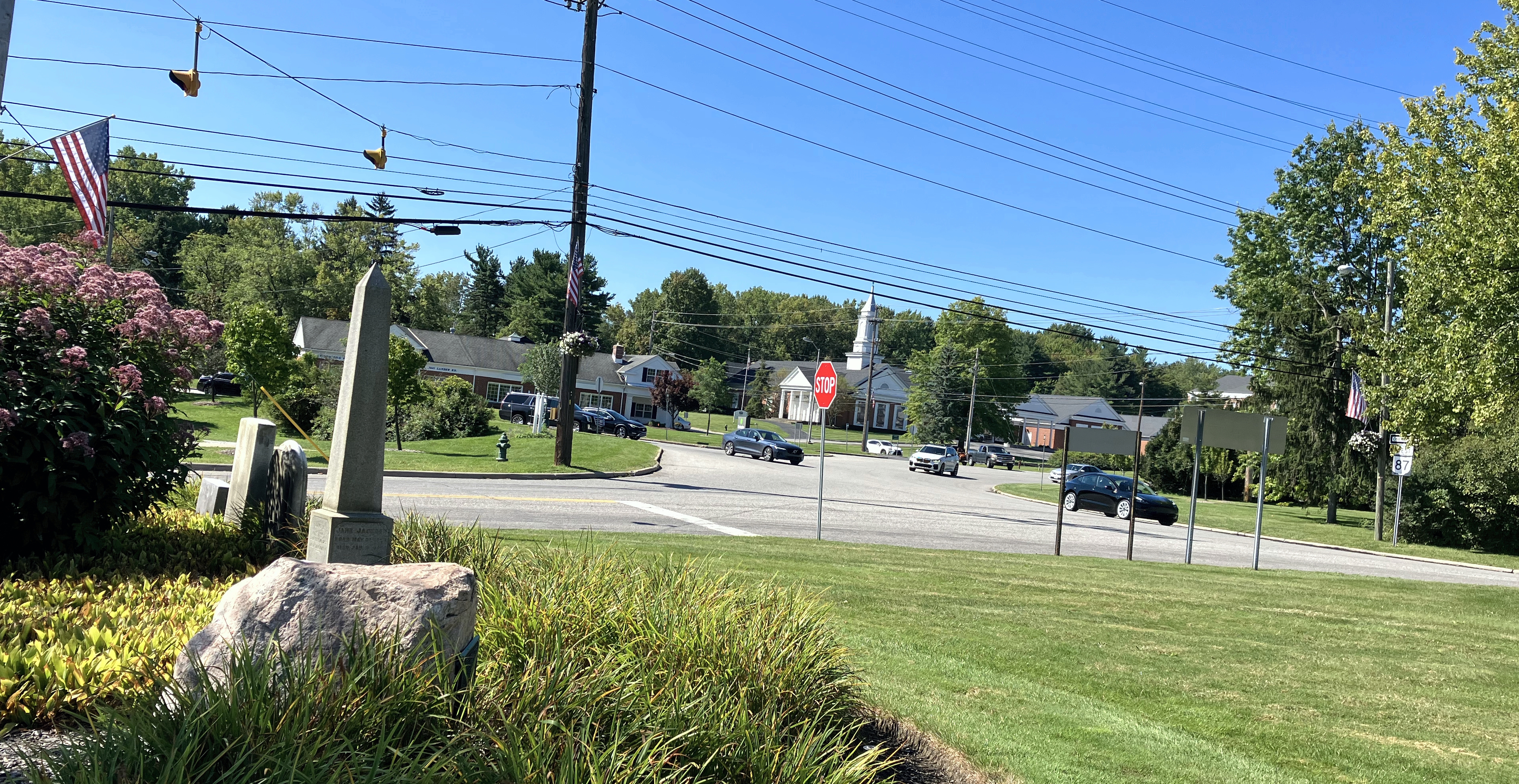
There is a concrete structure that is visible, today, near the center of that circle. It is very close to where stop #28 existed. But, what was this structure? The Pepper Pike Service
Department does not know it’s history or function. One person familiar with interurbans suggested that it looks like a barrier
used to protect passengers waiting for street cars from vehicular traffic but, when the C.& C.F. ran there,
automobiles were rare, and such a stucture would have been unnecessary. Maybe it was track car stop or platform marker for the C.& C.F. or a future
rapid transit planned by the Van Swearingens when the circle was created.
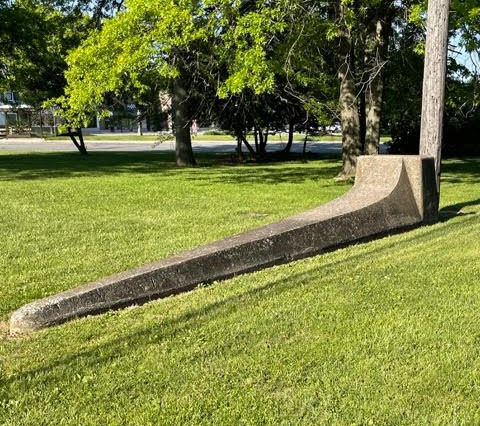
Photo by Paul Gockel
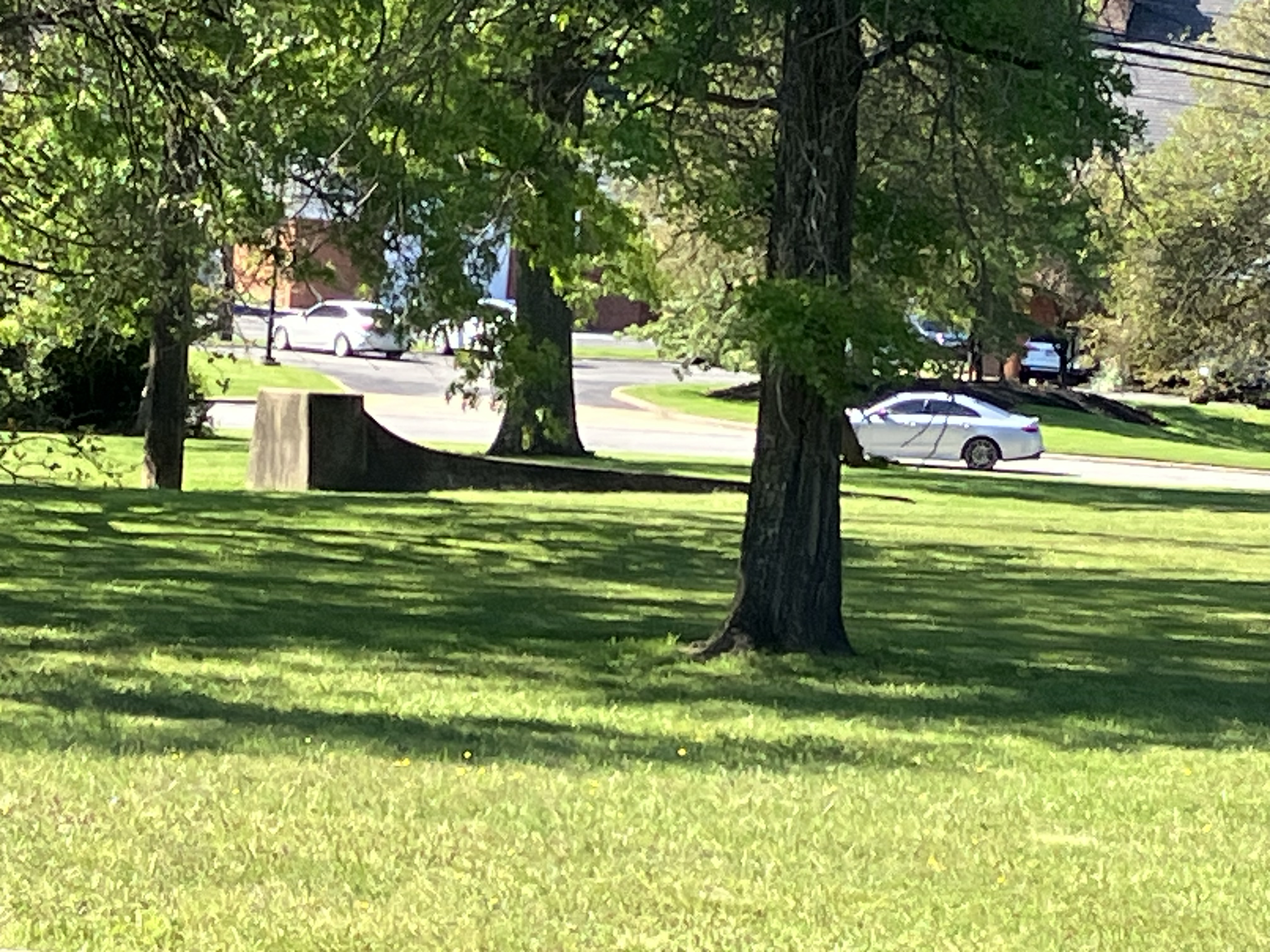
Photo by Gil Wellman
Large end of structure facing east
Landerwood Circle was an integral part the expansion of the Shaker Rapid envisioned by the Van Swearingen brothers.
They had plans to extend their rapid transit beyond Green Road to the Shaker/Gates Mills Blvd.Circle and
eastward down Gates Mills Blvd to Gates Mills. Today’s broad boulevard medians and
traffic circles along Gates Mills Boulevard are evidence of this plan.
They also had plans for an extension southeast from Shaker/Gates Mills Blvd. Circle, ending in a trolly loop at Landerwood Circle. After the C.& C.F.closed in 1925,
Van Sweringen engineers preserved the former C.& C.F. right-of-way along Kinsman Blvd between the Warrensville Center-Van Aken rapid station and
Landerwood Circle. The Van Sweringens also bought the former right-of-way from Landerwood Circle to Chagrin Falls.
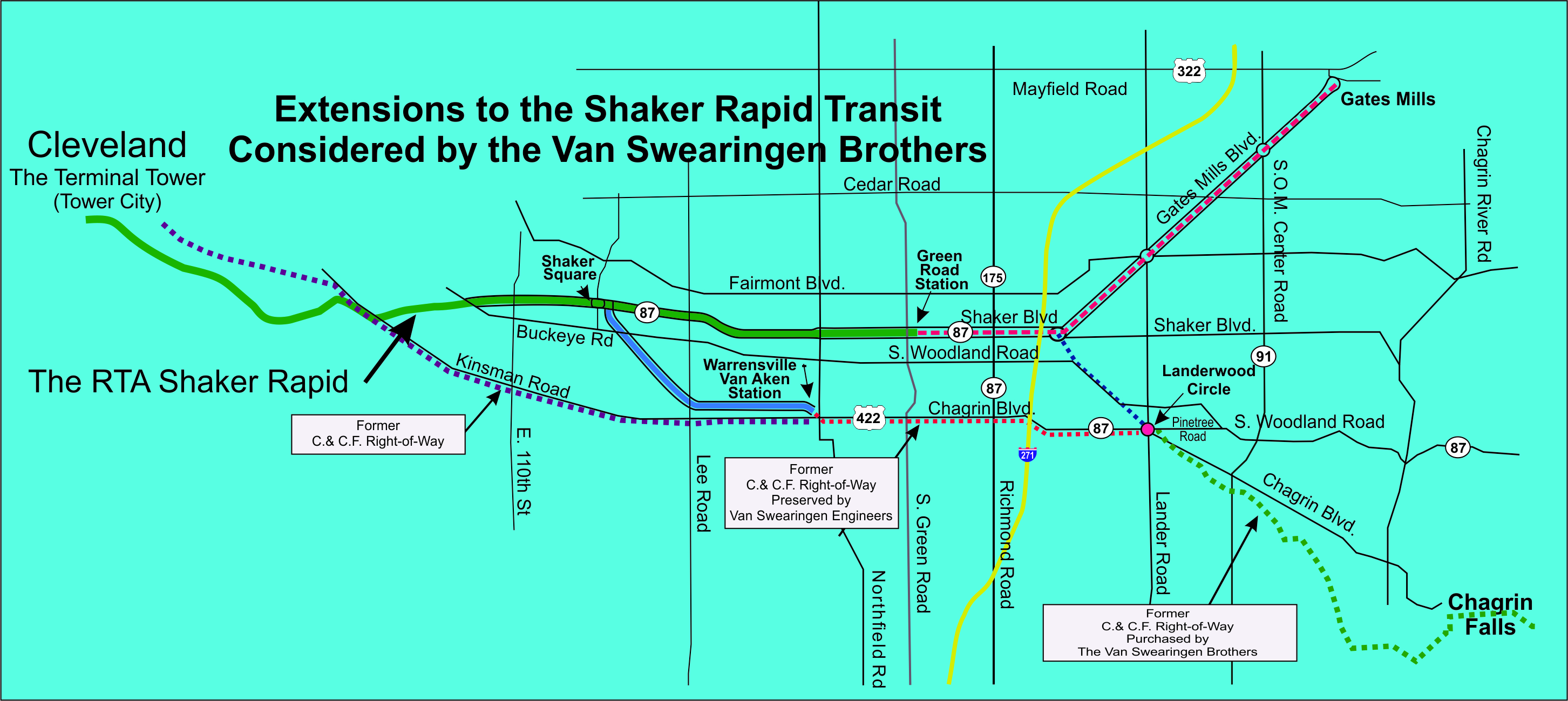
Although the Van Swearigen Brothers never completed their plans, due to the Great Depression, their Rapid Transit survives as the RTA Blue/Green line. And, interestingly,
RTA Kinsman Bus #14 still follows much the same route as did the C.& C.F. with frequent service from Cleveland via Kinsman and Chagrin Blvd. to Landerwood circle. This includes a connection with the Warrensville Center-Van Aken rapid station.
However, service to Chagrin Falls ended in 2009.
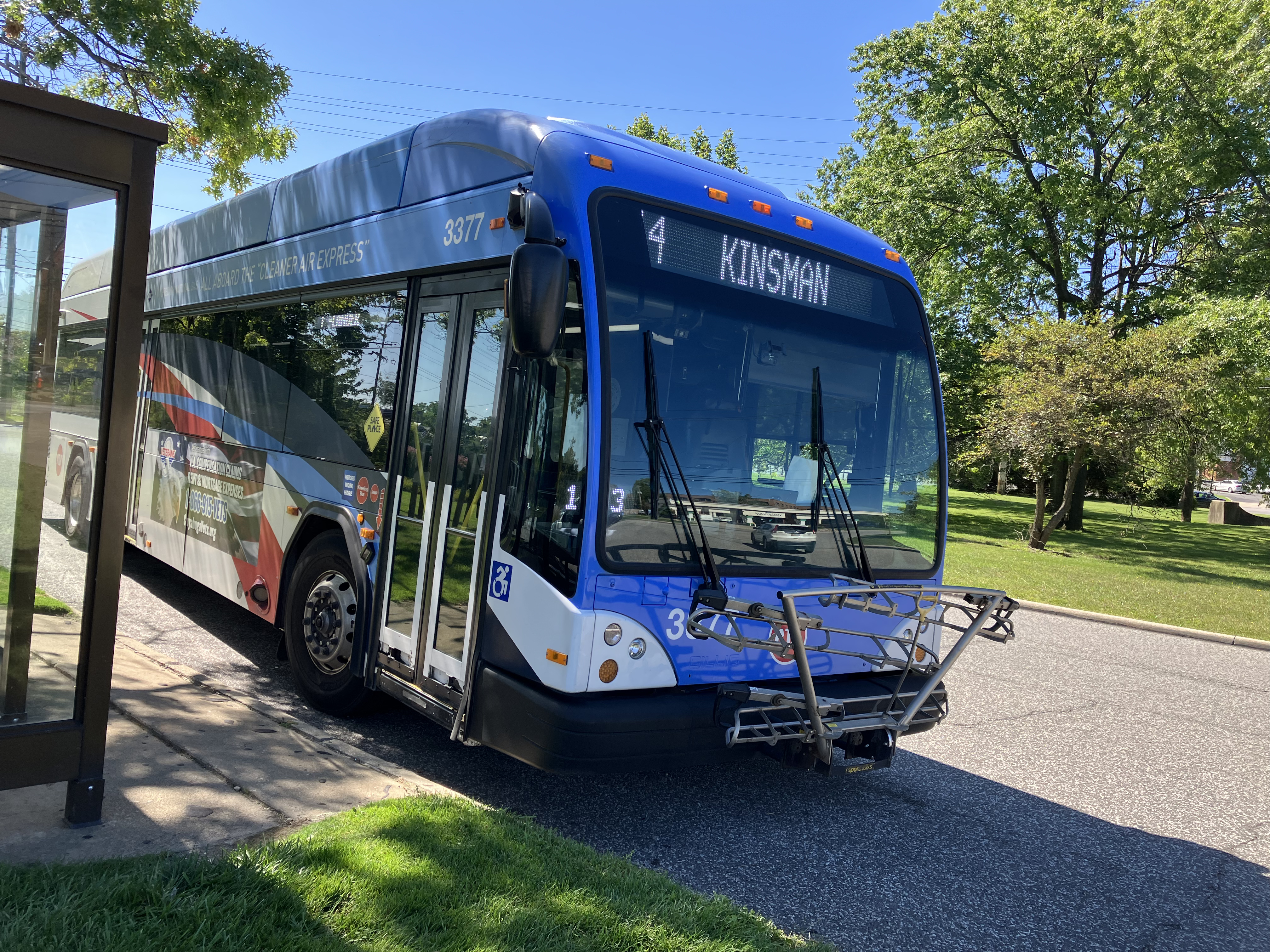
We want to thank Dan Rager, Paul Gockel, Jim Advent, and Vel Litt for their assistance with this post.
Vel Litt's
Orange Township Between The River & The Wooded Hills
is a interesting book about Orange's History
You might also want to read Dan Rager's : Cleveland & Chagrin Falls Interurban vs
Cleveland & Eastern Railway - Complete History, described on our Museum Shop page
* * * * *
The PBS Video:The Interurban Is Still Available!
If you missed The Interurban, the PBS documentary on the Cleveland & Eastern, it is still available to view. Just click The Interurban.
All we ask is that you provide some feedback at Input so PBS knows there is interest in the subject. Otherwise, they may not do this again.
This Documentary was originally aired July 24 on WVIZ, Channel 25 Cleveland. Dan Rager, author and C & E member, was one of the presenters and Leon Bibb was the narrator. Larry Baker produced the film for PBS using many of Dan's published books.
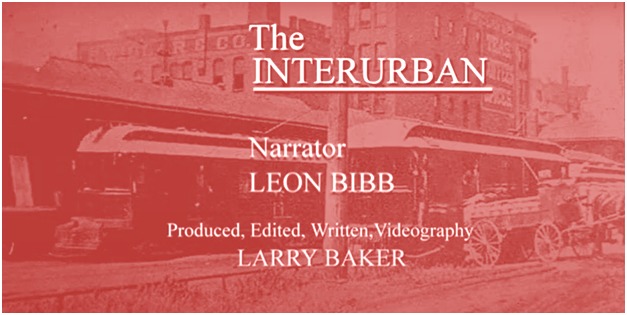
* * * * *
Possible Tour of Cuyahoga Indian Club
The C & E members may have a rare opportunity to tour an old property which was once a stop on the C & E!
Stop #26 was located between the Novelty Crossing on Chillicothe Road (current Route 306) and Fullertown Station at Sperry Road. At this stop was the private Cuyahoga Indian Club, a retreat for prominent wealthy Cleveland businessmen such as Rockefeller.
The C&E added the stop after the Club was built around 1906. There was a suspension bridge over the Cuyahoga River and a lighted walkway that allowed riders to walk south from the station to the grounds of the Club. The concrete foundations of the C&E station, the abutments and iron supports of the suspension bridge still remain. Two of the original buildings (clubhouse and bunkhouse) also remain.
The previous owner of the land indicated that he intended to save the clubhouse and bunkhouse and possibly the suspension bridge. He mentioned that the CEIHSM might possibly tour the property. Since this story was posted, the land has been sold, and we have not talked to the new owner. We still hope to schedule a tour.
The picture shows Adam Dietrich standing on the steps to the bridge, across the Chagrin River from the former Cuyahoga Indian Camp.
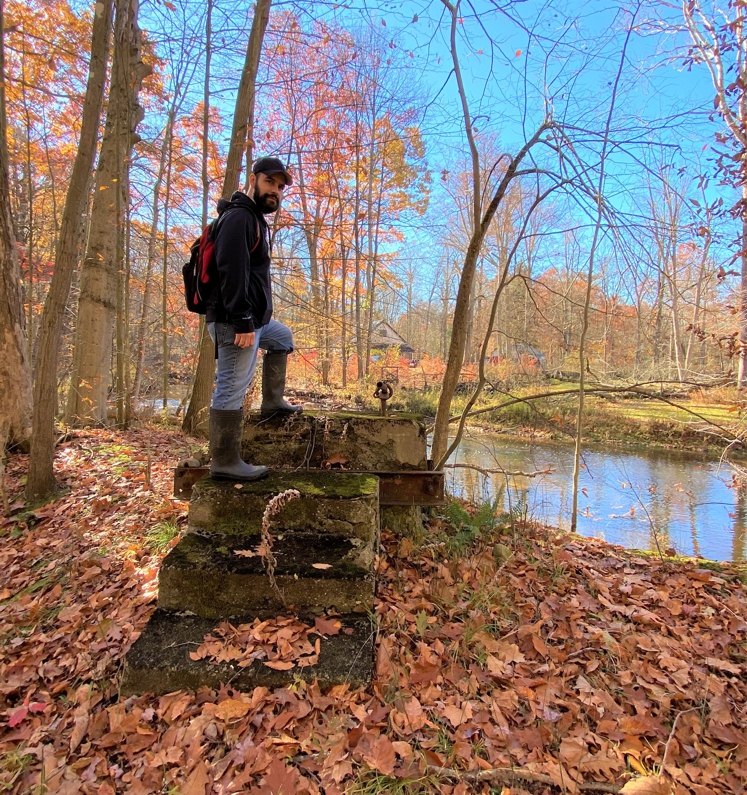
* * * * *
Dan Rager Publishes New History On Ohio Interurbans.
In his Ohio's Interurban Railroad History 1884-1950's - Vol.5 , Golden Spike Edition, Dr. Rager explores the genesis and development of the interurbans which once connected many cities and towns in the State.
He describes the complex history where many of the companies were frequently renamed, reconsolidated, restructured and sold and resold, again and again. He explains the reasons why the interurbans and street car companies went out of business in Ohio and across the United States.
This book contains a detailed history of each company and includes many photographs, charts, and maps of each line as well as a listing of car manufacturers. A special photo chapter features the evolution of car styles over the years. Another chapter relates how interurban companies developed amusement parks and promoted their railroads in some unusual ways.
You can find more about this new book (Item 012) on our Museum Shop Page on this website.
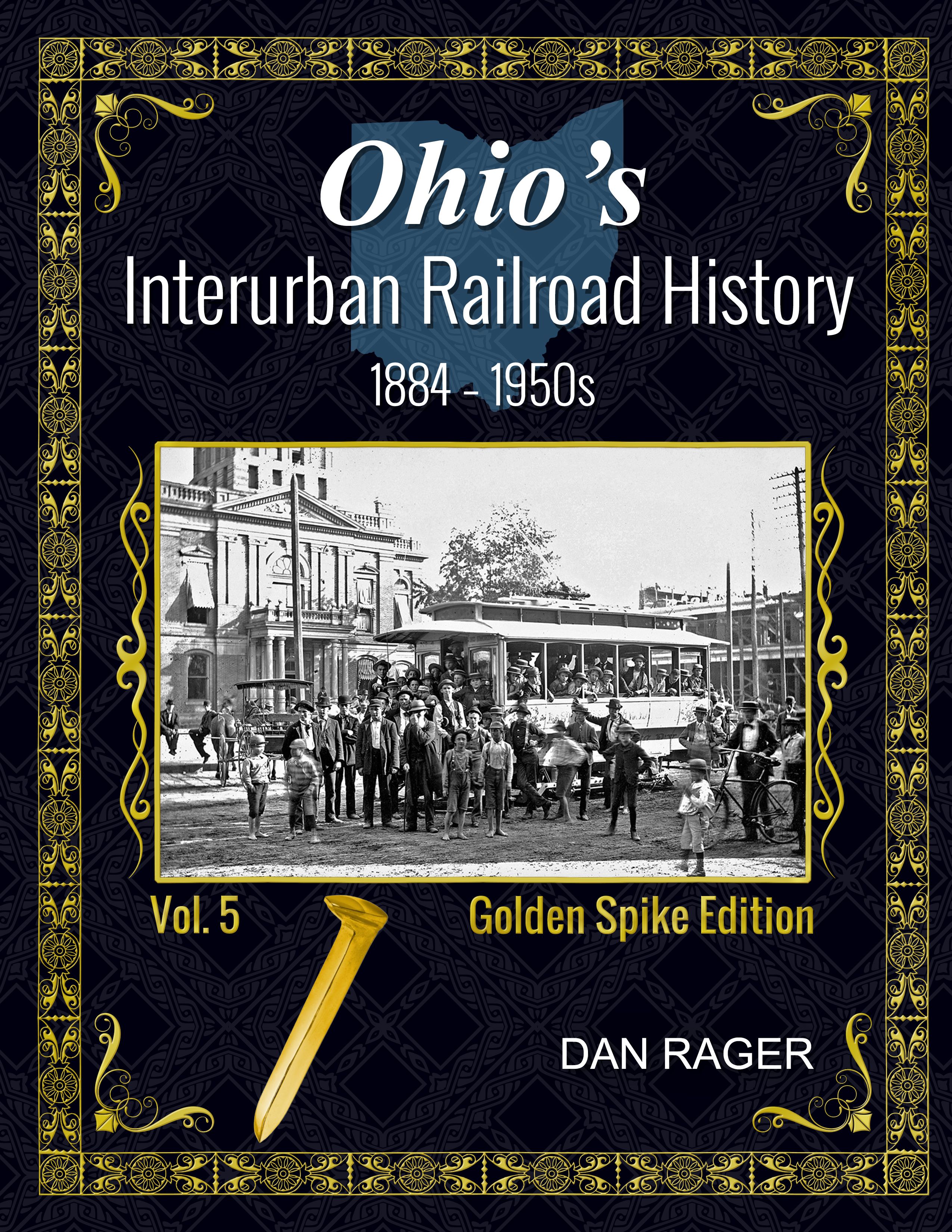
* * * * *
Short Video Published About The Railroad and Interurbans in Geauga County
The new video, Railroads of Transformation, Part II, describes the development of these rail lines in Geauga County in the late 1800s and early 1900s.
* * * * *
Another Book Is Published About The Lake Branch of B & O Railroad
For the second time, this year, a new book has been published about the Lake Branch of the Baltimore and Ohio Railroad (the Chessie System) which ran from Fairport, Ohio to Warren, Ohio. The book,Ghost Rails XIX B&O Lakers, was written by Wayne Cole, an author of numerous books about the interurbans and other railroads which ran in Eastern Ohio and Western Pennsylvania.
The C & E Interurban connected with the B & O in Chardon and Middlefield in 1899 which was vital for the Interurban's construction and later business.
You can find further information on our Museum Shop Page!
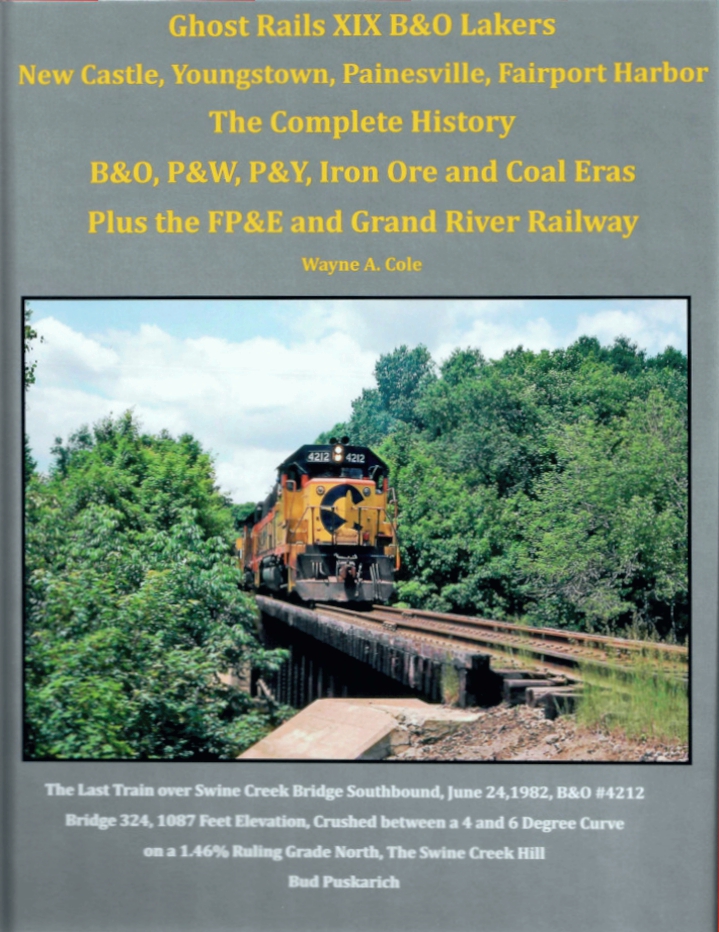
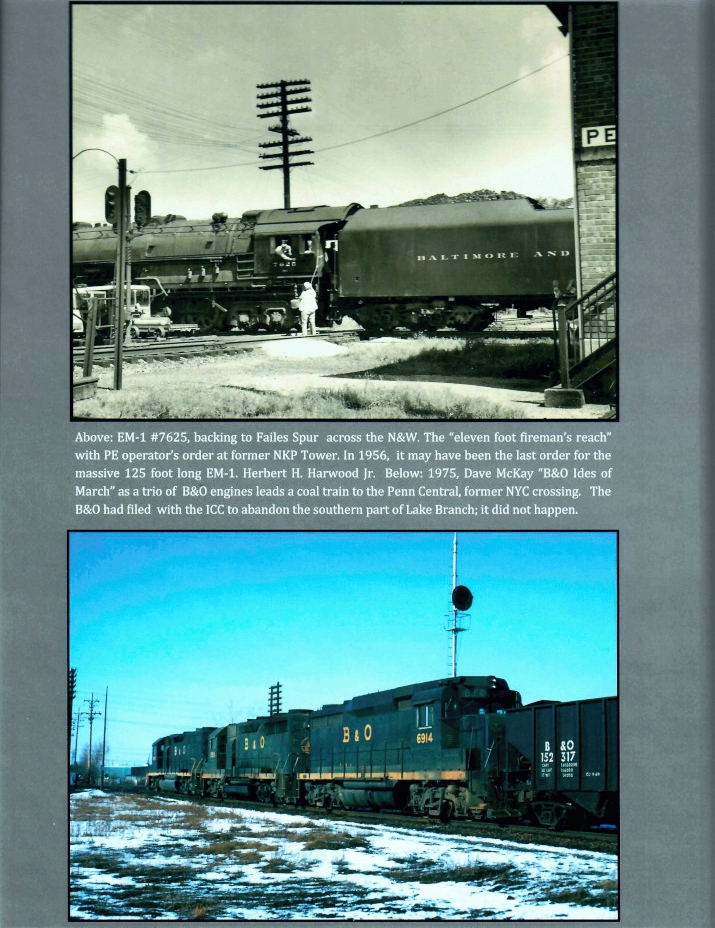 <
<
* * * * *
C & E Website Updates Museum Shop Page
We have recently updated our "Museum Shop" page to show what is available about the C & E, other Northeastern Ohio interurbans, and connected railroads.
The page now provides a detailed description of 13 books, 3 DVDs, a large wall map of former Geauga County railroads (including the C & E), and even a C & E Christmas tree ornament!
The items are available from listed publishers or authors. A few items are also available as gifts for your C & E Interurban Museum donations. The page reflects some information gathered over the years by members of the Chesterland Historical Foundation, the C & E Interurban Historical Society, the Chagrin Historical Society, the Gates Mills Historical Society and many others.
Take a look and enjoy!
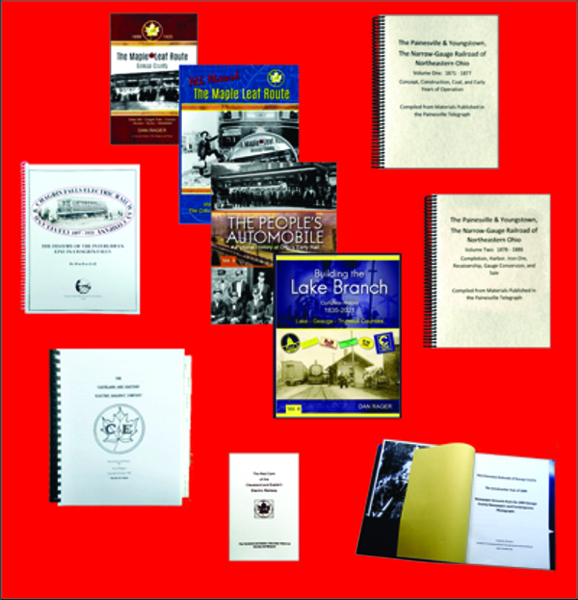
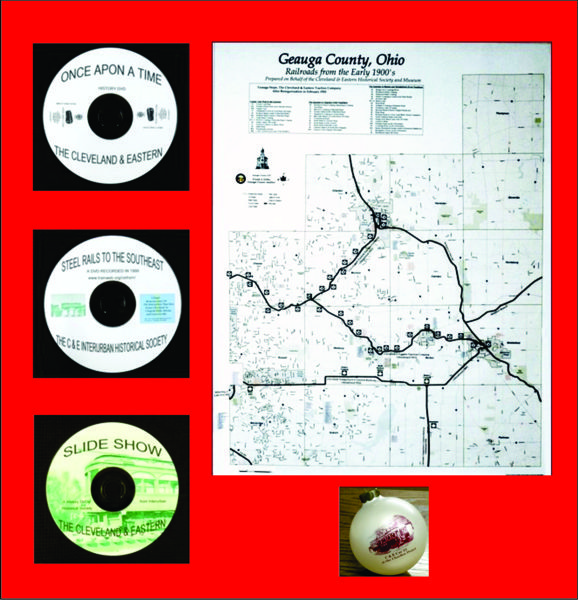
* * * * *
Final phase of Maple Highland Trail completed!
On September 16th, Chardon celebrated the completion of the Trail, with a ribbon cutting ceremony at the Trail Head at 320 Park Ave in Chardon, Ohio.
The Maple Highland Trail is the recreational bike trail in Geauga County that runs from Colburn Road, in the north, to Swine Creek Reservation, in the south. It follows much of the roadbed of the former Lake Branch of the B & O Railroad (Chessie System) which ran from Fairport Harbor to Warren, Ohio. (Download Trail Map). There are connections in the north to the Greenway Corridor in Lake County, which runs to Jackson Street in Painesville.
Dan Rager, in his book, All Aboard The Maple Leaf Route, Vol. 2 reveals much about this area.
As you stand at the Park Ave.Trail Head, you are just south of the beginning of what was once a large 14-track rail yard. The Cleveland and Eastern Railway had connections with the yard which enabled the transportation of coal, equipment, supplies, and early passengers, during the construction phase of the Interurban. It also provided a valuable freight interchange in the ensuing years.
Looking north, you will see an odd brick building which Dan revealed was the "brine house" used in the purification of the water for the steam engines. This is the only structure left from that rail yard. The City of Chardon is currently investigating whether it will be practical to preserve that historic building.
At a location a few yards beyond that building on the opposite side of the trail, was the location of a double-spouted 50,000-gallon water tank used by the railroad to fill locomotives.
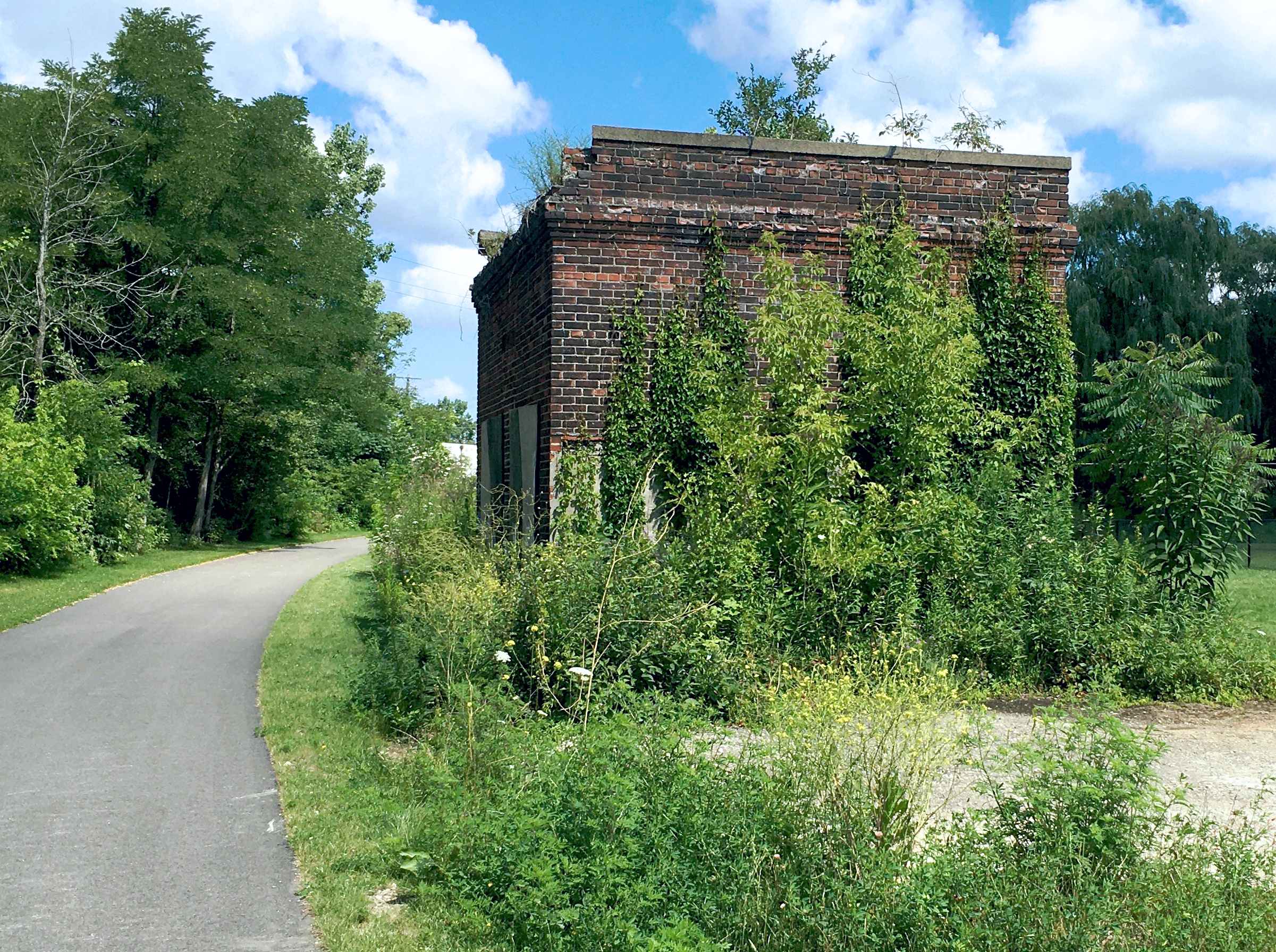
If you walk south on the Trail, the former B & O right of way will be on your right. Approximately 2/3rds of the way between Park Avenue and South Street (State Route 44) the Interurban crossed the railroad on an elevated trestle bridge and continued east to South Street where it then turned north as it continued to Chardon Square.
* * * * *
New book about the Lake Branch of the B & O Railroad is published
Dan Rager, a member of the Cleveland & Eastern Interurban Historic Society, has published a new book about the railroad that once ran through Chardon and Middlefield.
The book, Building the Lake Branch, Complete History, 1835-2021, Vol.4, is a comprehensive history of the line that eventually became the Lake Branch of the Baltimore and Ohio Railroad (Chessie System), and ran from Fairport Harbor through Painesville to Youngstown, Ohio.
The publication explains the complex development of railroads in the region. It describes how the Lake Branch, which had a dozen different names over its 185-year history, evolved from a narrow-gauge passenger and freight railroad into a major standard-gauge mover of iron ore to the steel mills of Youngstown and Pittsburgh and hauler of coal to the port at Fairport Harbor on Lake Erie.
The Cleveland & Eastern had connections with the B & O in Chardon and Middlefield. This allowed the C & E to transfer materials and equipment during its construction. The Chardon connection also allowed the early C & E steam engines to access the B & O's water tank and was later used to transfer coal to its power plant in Gates Mills.
The book contains 300 color and black & white photos, maps, blueprints, and ‘then and now’ photos. It describes the lives of those who lived and worked on the road as well as the events that took place. It has separate chapters detailing the history of each village through which the line passed including current photos showing remnants of the line. In addition, it contains a unique listing of 546 Ohio railroads and 930 Lake Erie vessels.
You can purchase it via email from the Maple Leaf Publishing Company, P.O. Box 144, Chardon, OH 44024, or online from lulu.com.
It is also available via email from Mountain Road Bikes, 109 South St, Chardon, OH 44024 or at the Painesville Railroad Museum, 475 Railroad Street, Painesville, OH 44077.
The book is 310 pages and is priced at $65.00 plus $4.95 for shipping and handling.
Table of Contents.
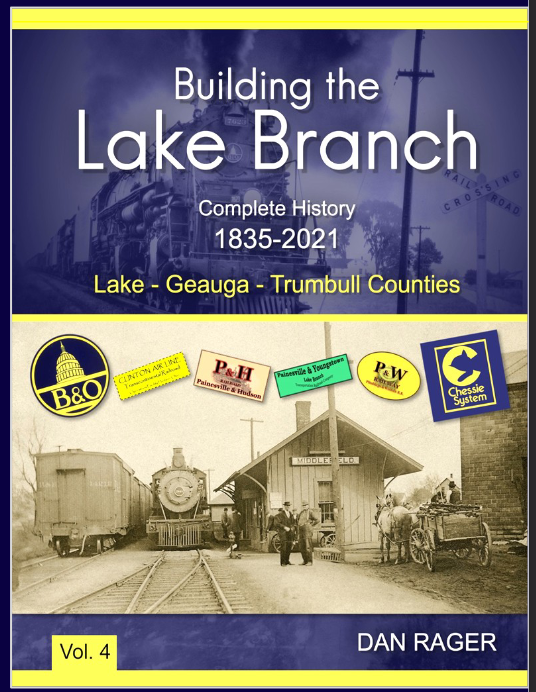
* * * * *
New interactive map of the C & E available
If you are interested in seeing a current map showing where the Cleveland and Eastern (C&E) once ran, you can now view it with NE Ohio Right-of-Way made with Google My Maps.
This map shows the former railroads and interurbans which once crossed Northeastern Ohio. You can zoom in and out; toggle between map and satellite views; and identify present-day roads, rivers, establishments, landmarks etc.
You can view the Cleveland & Eastern by clicking the NE Ohio Right-of-Way
. Once you enter the page, you can zoom within that view or select other views listed under the "untitled layer" or use the search fuction at the top of the page. There are 7 preset views of the C & E; 2 views of the Cleveland and Chagrin Falls Electric (Eastern Ohio Traction Company); and over 475 other views of former railroad right-of-ways.
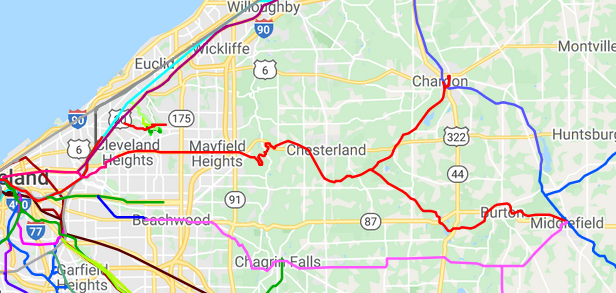
* * * * *
The Cleveland & Eastern Interurban Museum was featured at last year's May Open House
at the Chesterland Historical Village
The Museum, which is in the basement of the Historic Town Hall, operates a miniature train display, shows videos about the line, and displays many photos, and artifacts from the C & E and other Northern Ohio interurbans. We also sell books, maps, and other items to support the Society.
Visitors also viewed the original Scotland station that served as one of interurban stops in Chester. A Railway Express baggage wagon, recovered and restored by Interurban Society members, was also on display. Other historic buildings were also open.
Members Jim Rivers, Joe Laskowski, and Bill Jackson were available to answer questions.
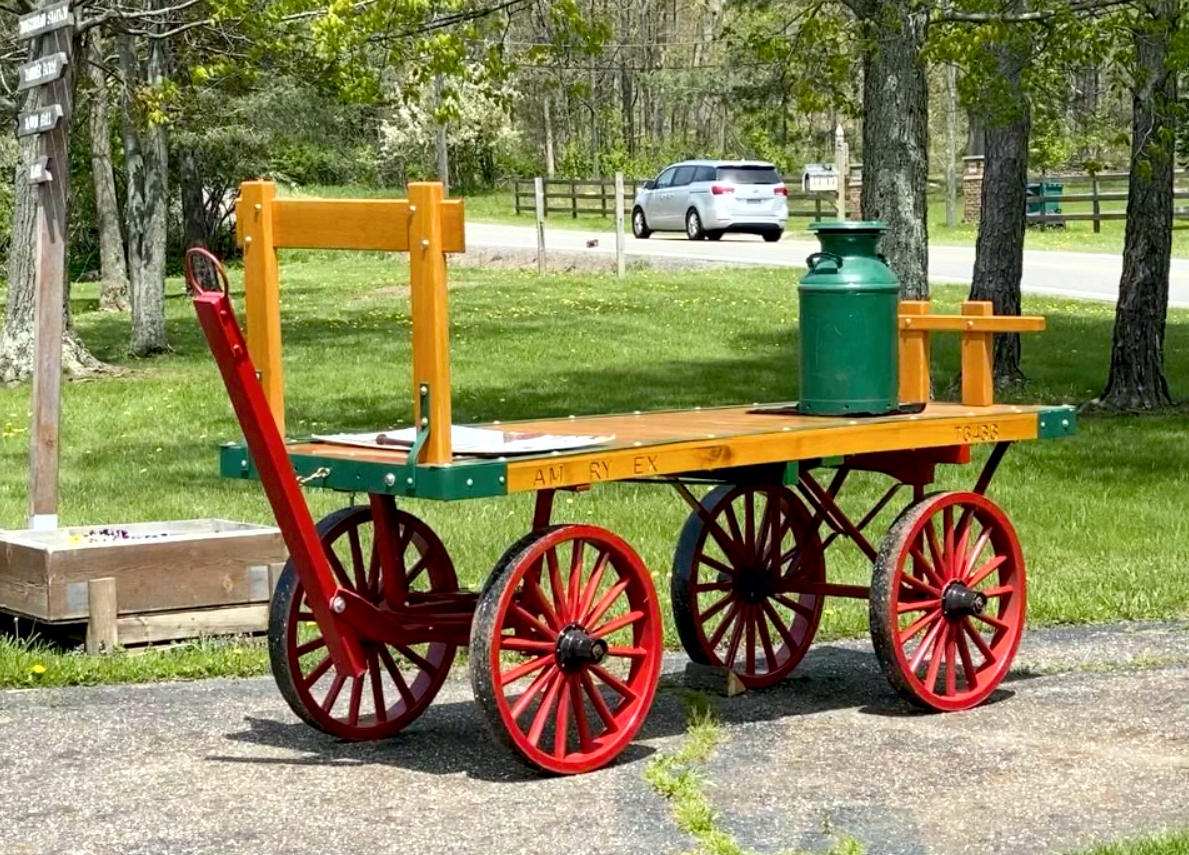

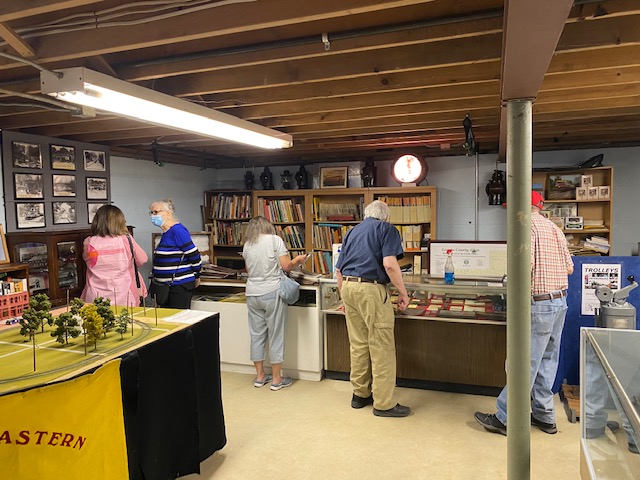
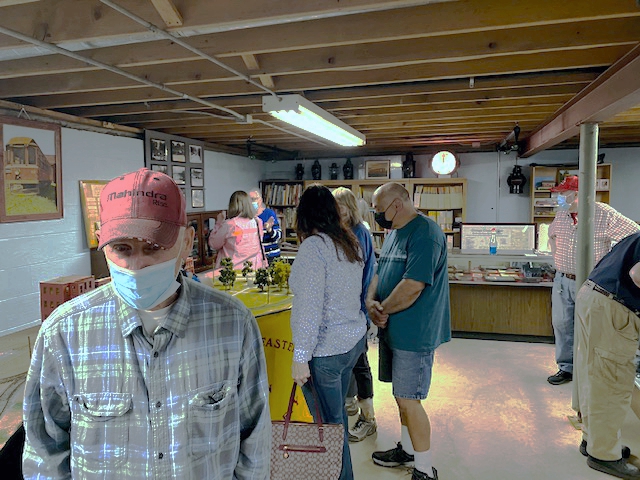
* * * * *
The People's Automobile - A Pictorial History Of Ohio's Early Rail, Volume 3 by Dan Rager,
published last July, adds to the historical record of Interurbans in Northern Ohio.
The book contains hundreds of rare photographs of the Cleveland & Eastern, Cleveland & Chagrin Falls, Lakeshore Electric, and Southwestern System railways. Captions provide a detailed analysis of each photo. The publication covers the interurban era in Northern Ohio, between the 1890
's and 1950's.The 12-chapter, 102-page (8-1/2 by 11") book includes a table of contents, glossary, and system maps.
The book available at the Maple Leaf Publishing Company, P.O. Box 144, Chardon, OH 44024, Email: mapleleafroute@gmail.com. The price is $36.95 USA, plus $4.50 for shipping and handling. The book will also be available at Lulu.com.
Dan Rager has also published two other books about the Cleveland and Eastern Interurban: The Maple Leaf Route Vols. 1 & 2.

* * * * *
William Meyer and Alex Vayda Donate Rare
Company Ledger to the C & E Museum
William Meyer and Alex Vayda of Hambden Township recently donated the financial ledger of The Cleveland Interurban Railroad to the C & E Museum. The ledger records cash receipts and disbursements of the company from January 1913 to January 1923.
The Cleveland Interurban Railroad was a company created by the Van Swearingen Brothers who also developed Shaker Heights, built the Terminal Tower, and acquired vast railroad holdings across the United States until the Depression. The Cleveland Interurban Railroad initially connected the Cleveland street car system, via Coventry Road, to the original right of way along Shaker Boulevard. This company eventually became the Shaker Rapid Transit which is, now, RTA's Red and Green Lines.
They also donated The Shaker Heights Rapid Transit by James Toman. This book is the history of Shaker Rapid from it's beginning to the present day.
The C & E Interurban Historical Society certainly appreciates these two donations that advance it's mission to collect and preserve artifacts of electric rail systems in Northeast Ohio.

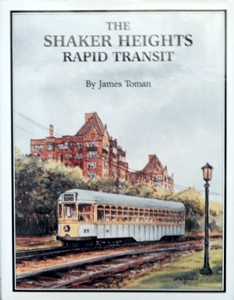
* * * * *
American Railway Express Baggage Wagon
Continues To Interest Museum Visitors!
This type wagon was commonly used by Interurban Railroads to move freight to and from the trolley cars at stops along the line. The Museum's freight wagon was found in the Cleveland flats by member Dick Philpott, who saved it from the scrappers and put it in storage until it could be rebuilt.
In 2013 Dick gave the wagon to the Museum to be restored and put on display.
Dick and fellow Museum member Jim Rivers moved the wagon to Jim's work shop where, over the next two and one half years, the wagon was completely dismantled and rebuilt. All of the wood except one piece was replaced and all of the metal parts were refinished. Even the wheels were completely rebuilt.
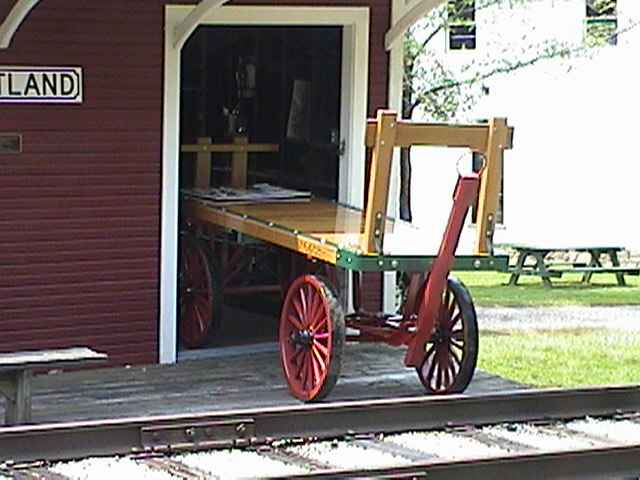
On April 2, 2015, returned to its original condition, the wagon was moved to its new home in the Cleveland & Eastern Scotland Station at the Cleveland and Eastern Museum / The Chesterland Historical Foundation.
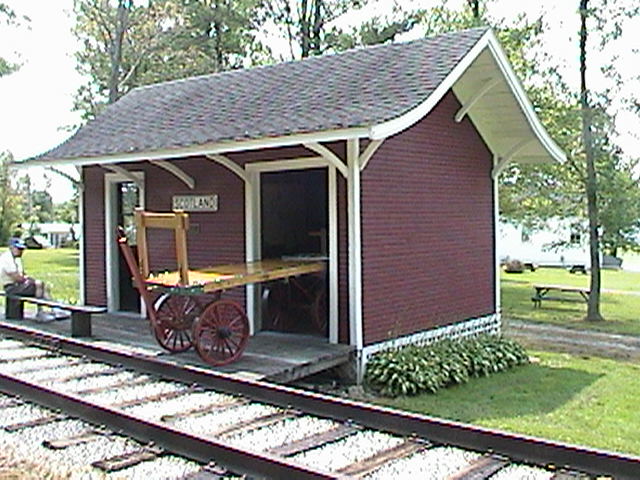
|
|
|